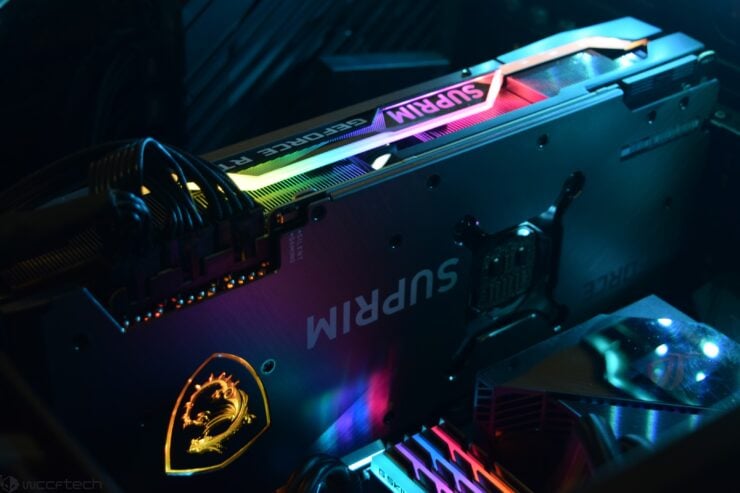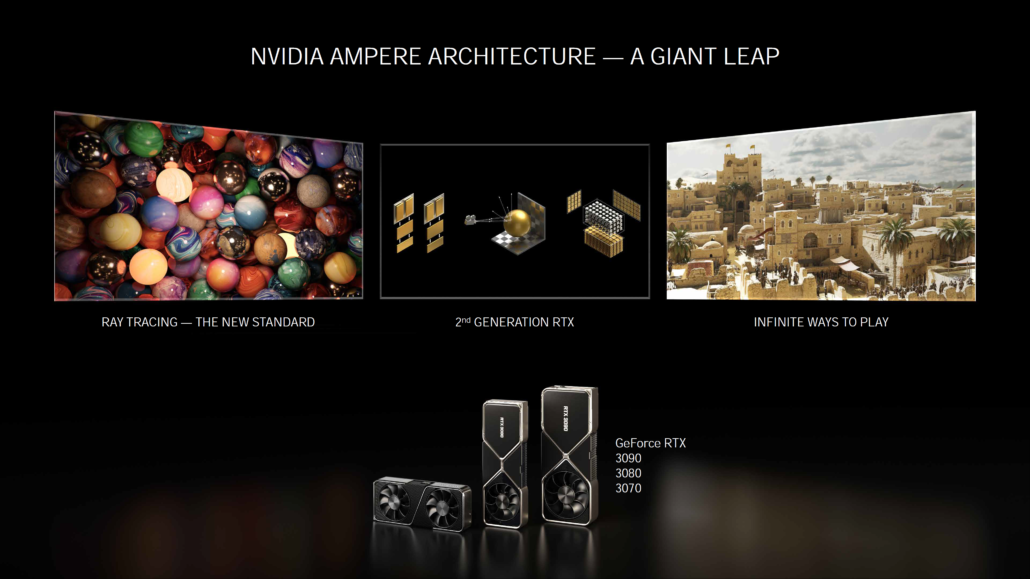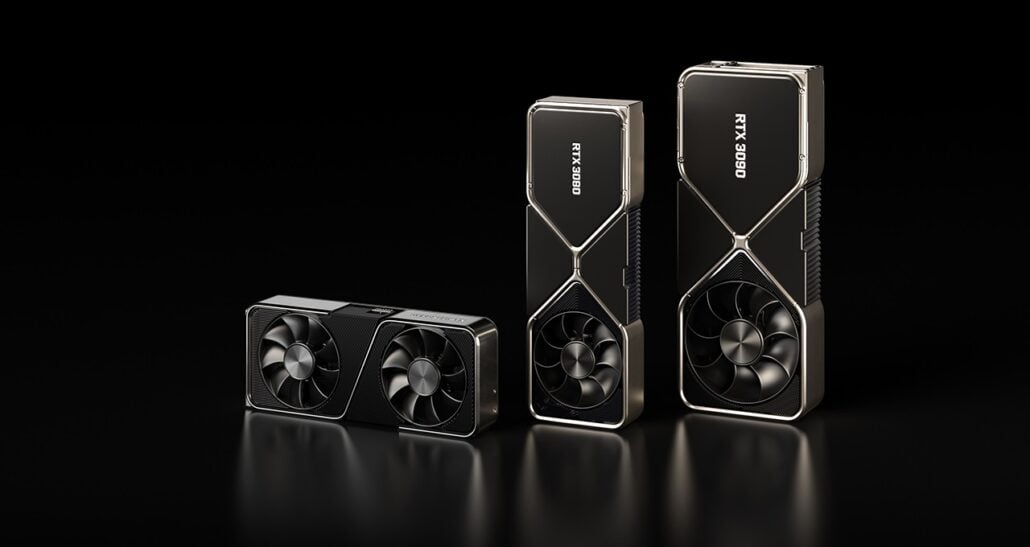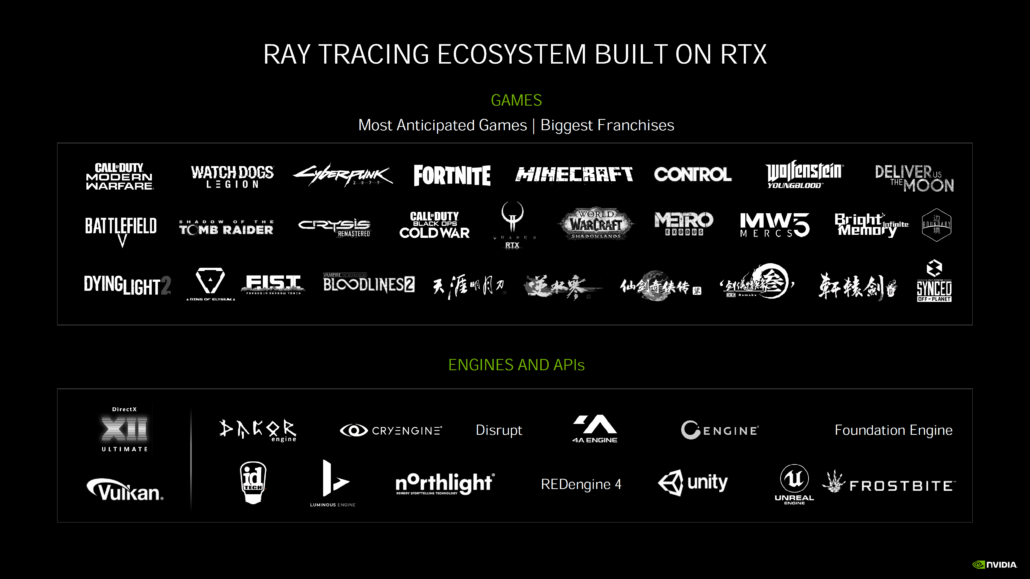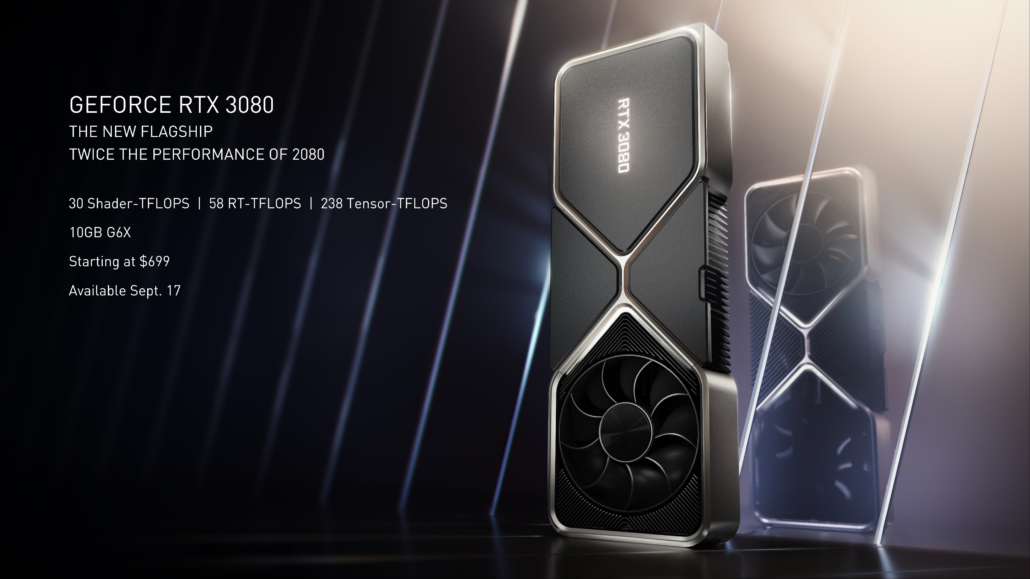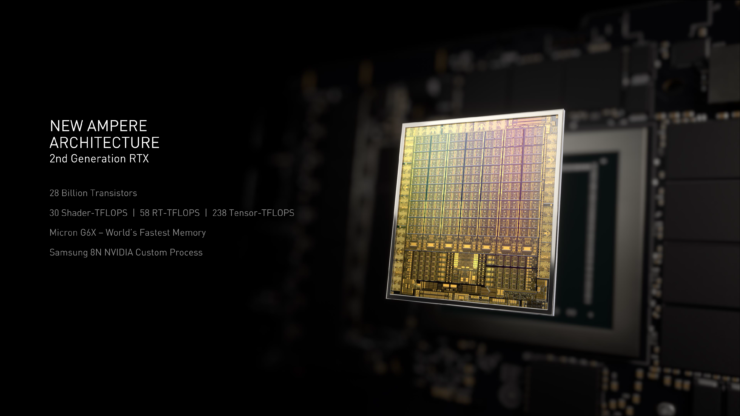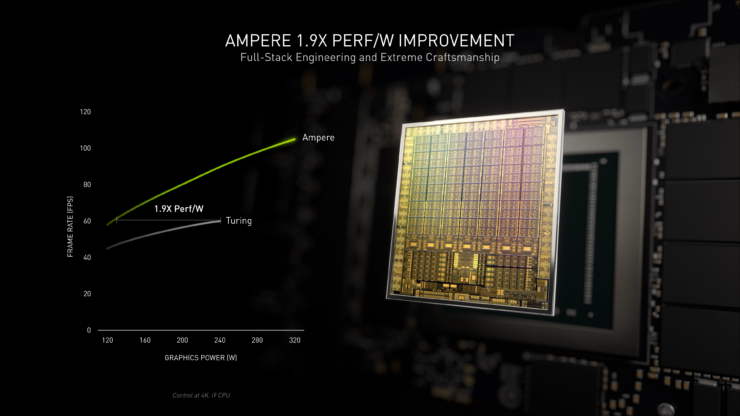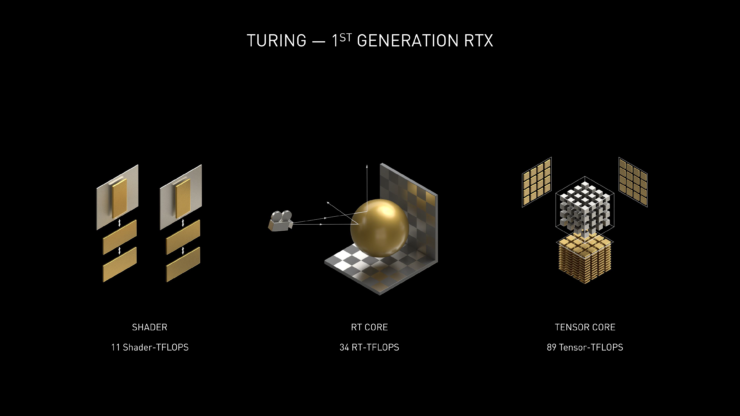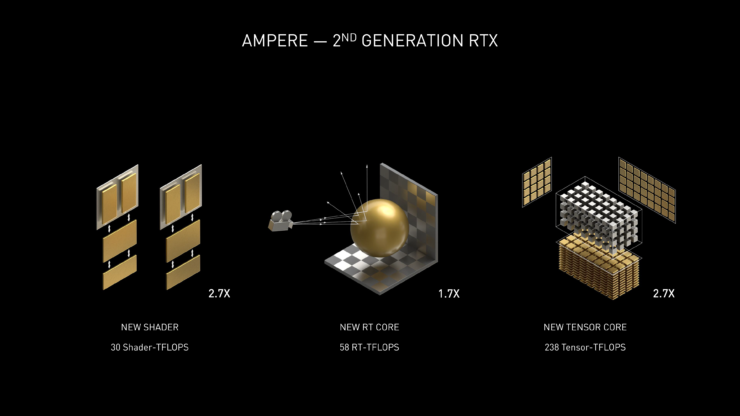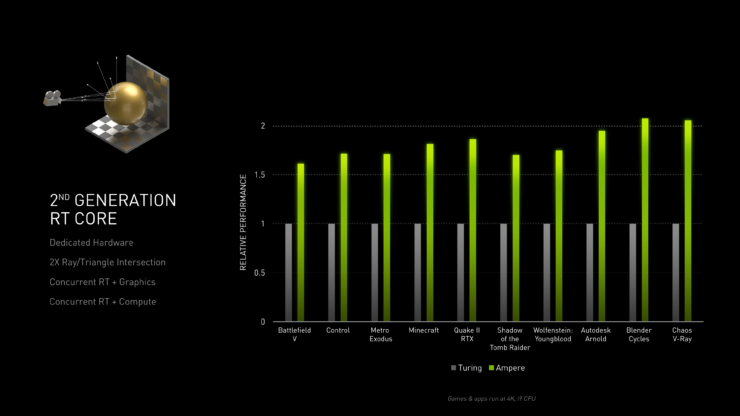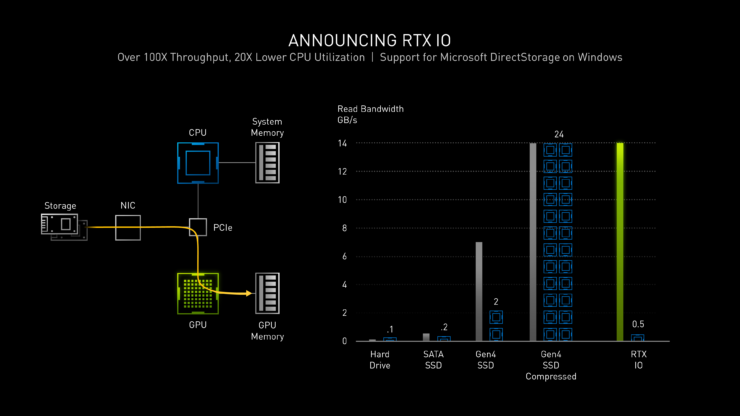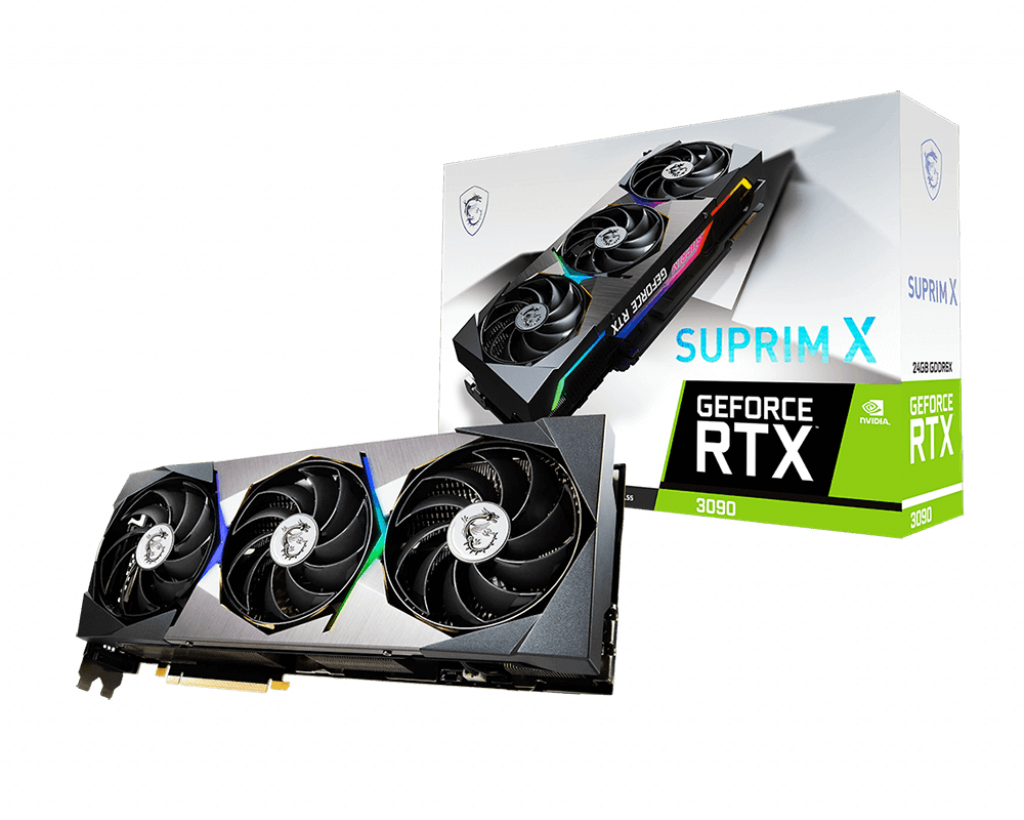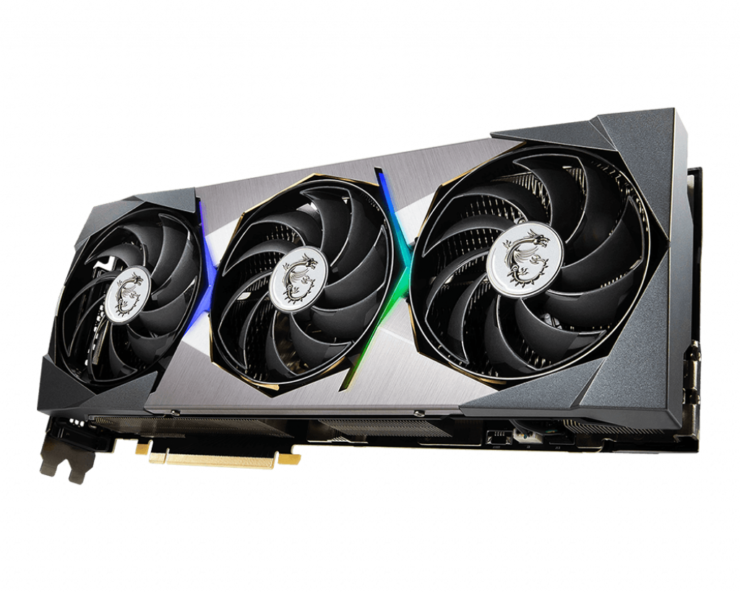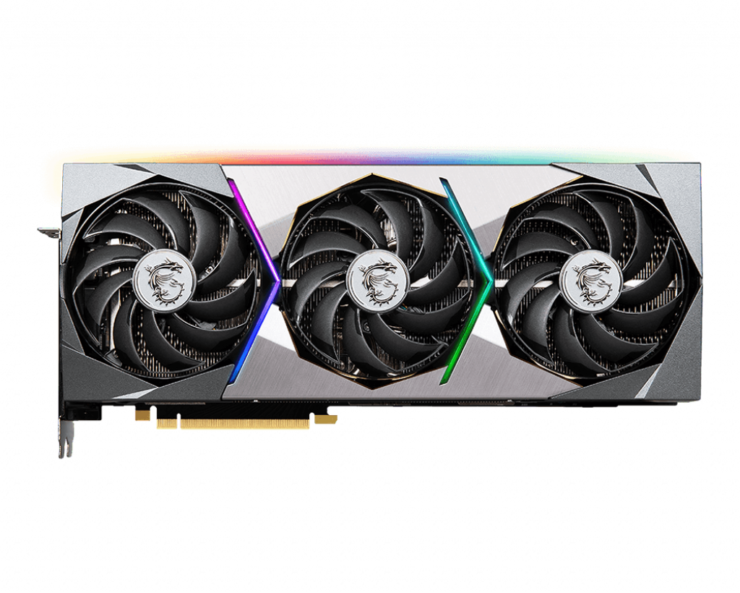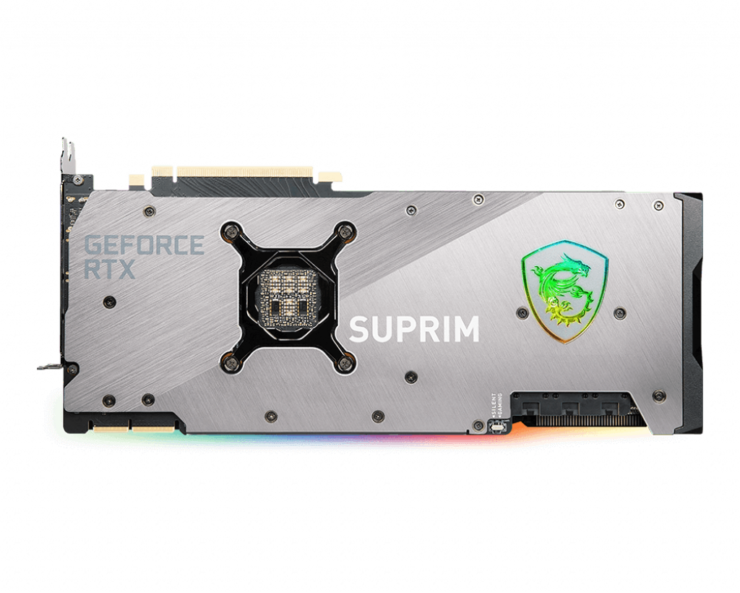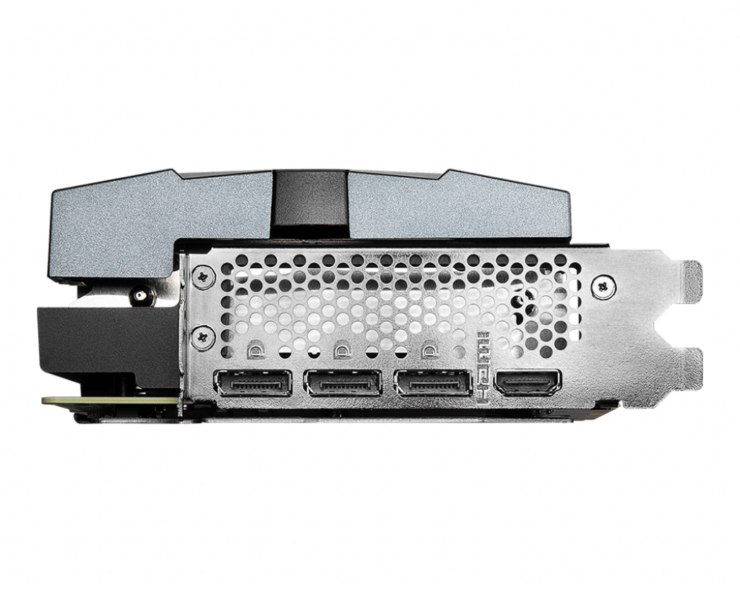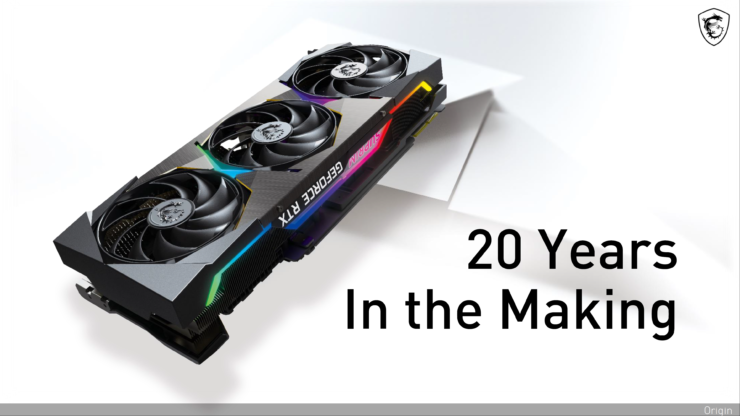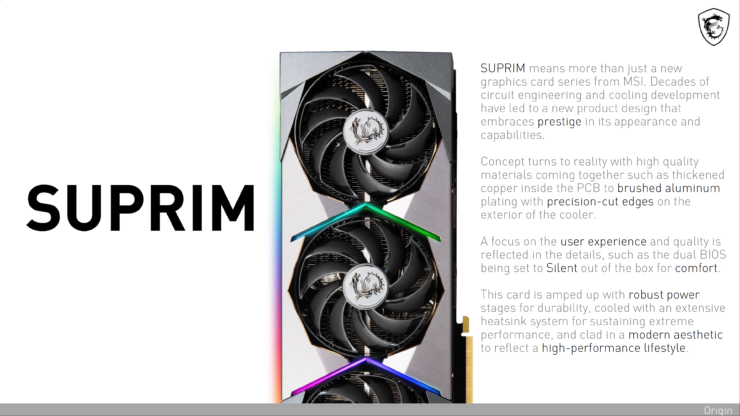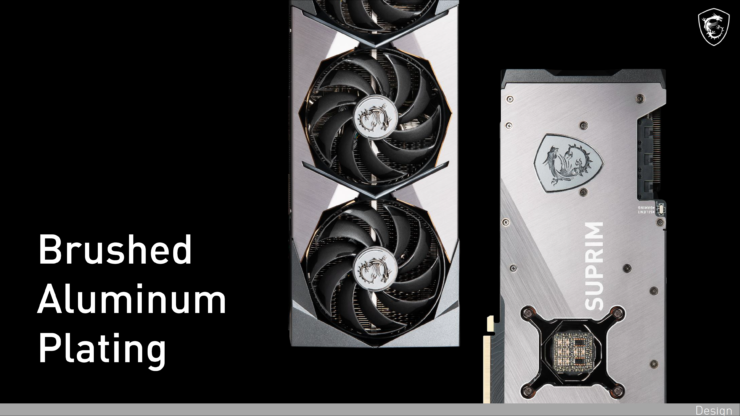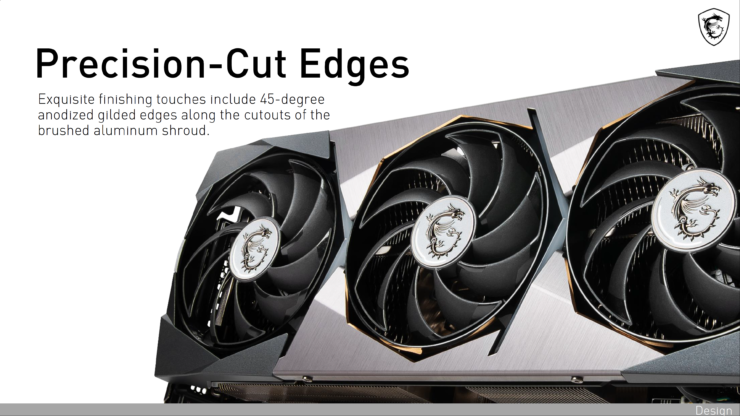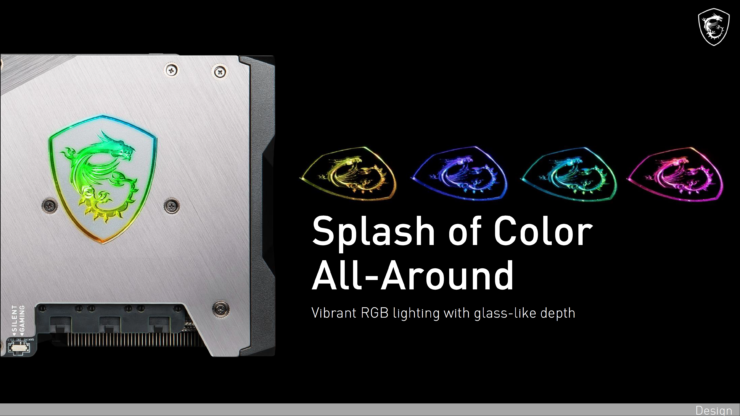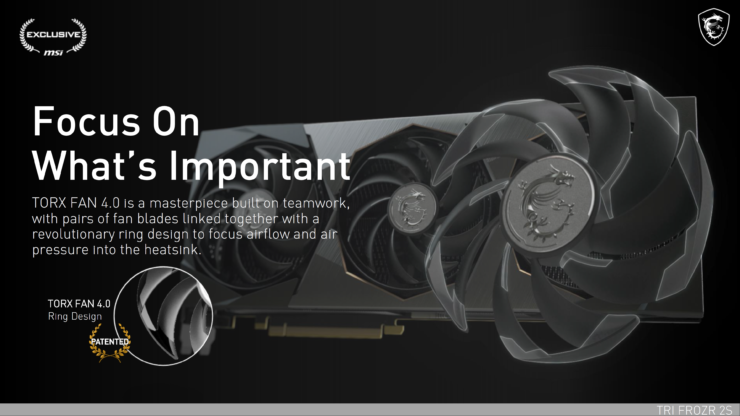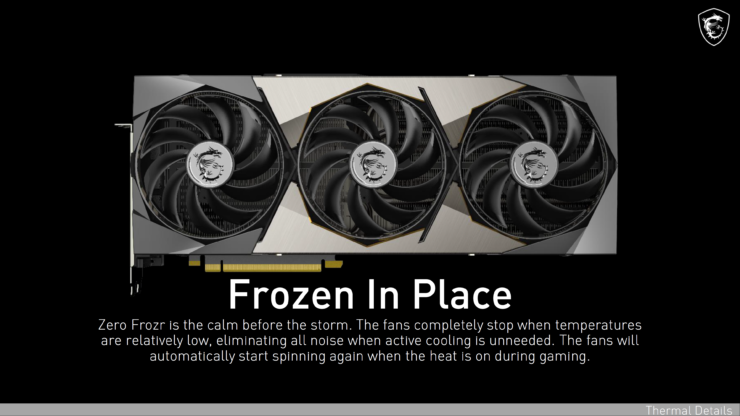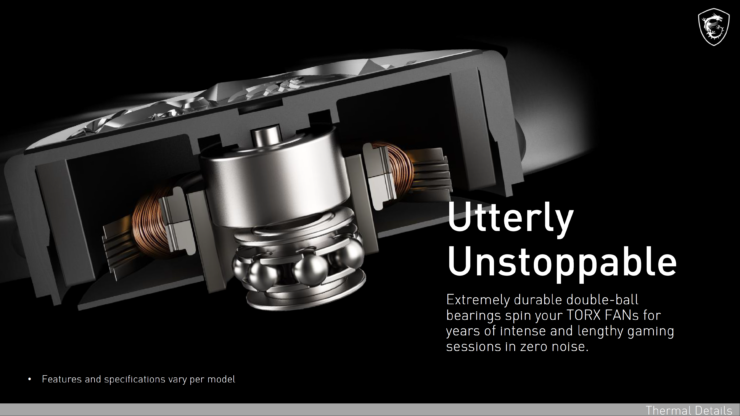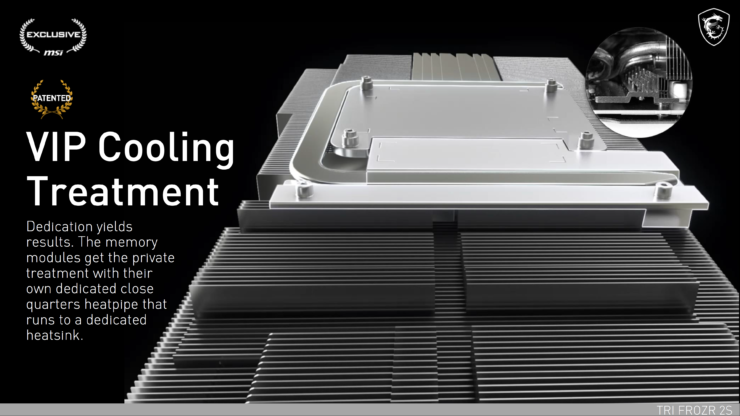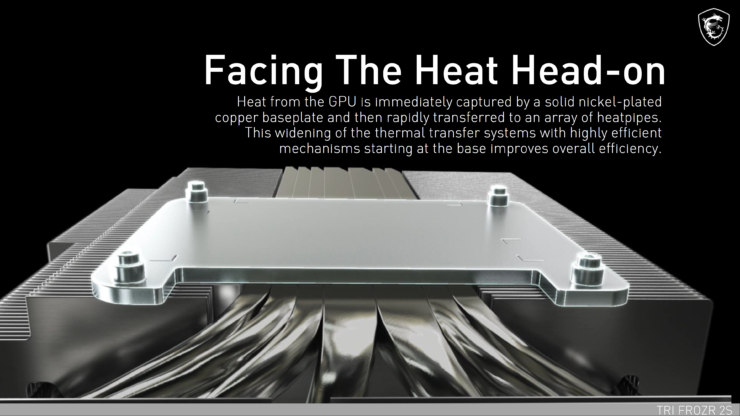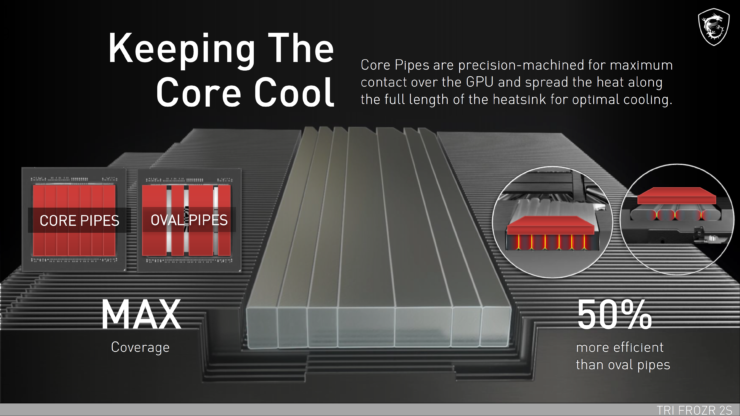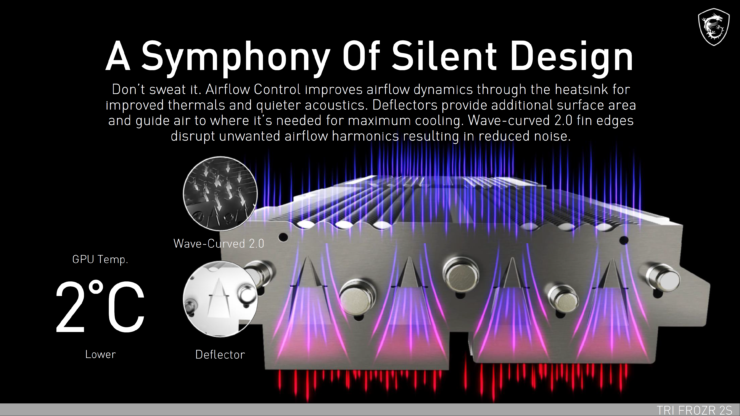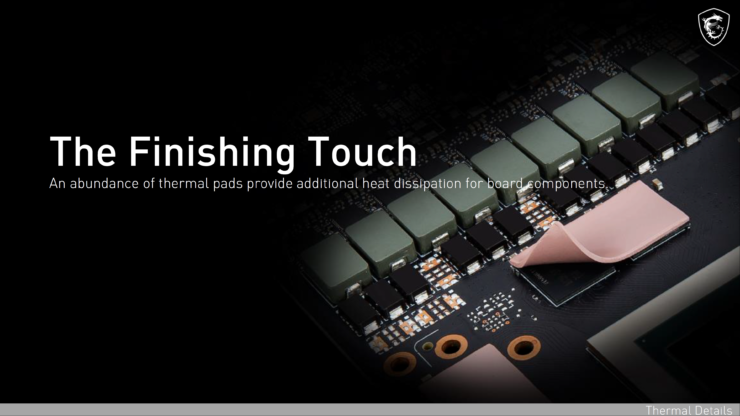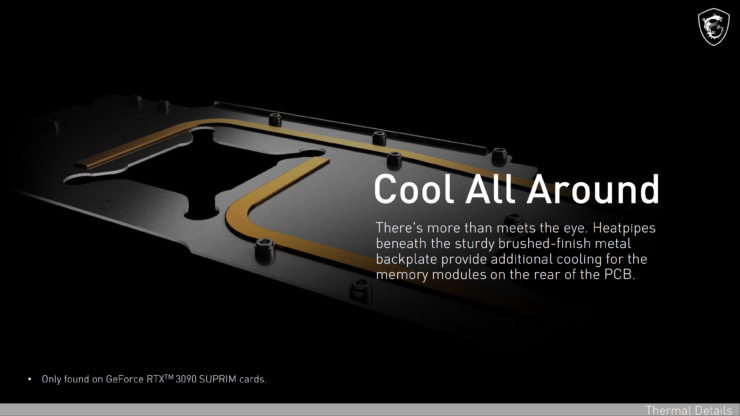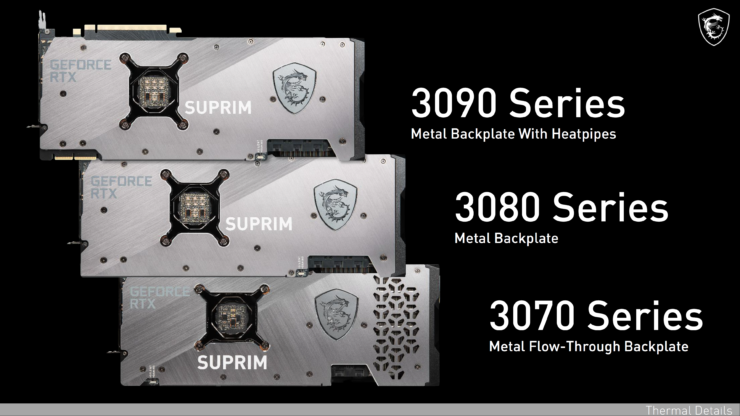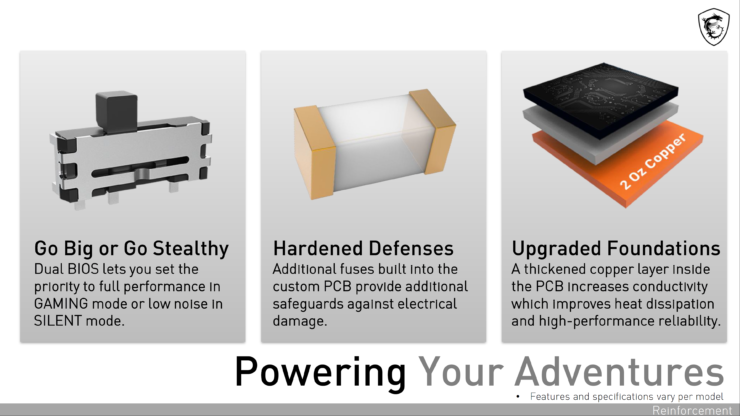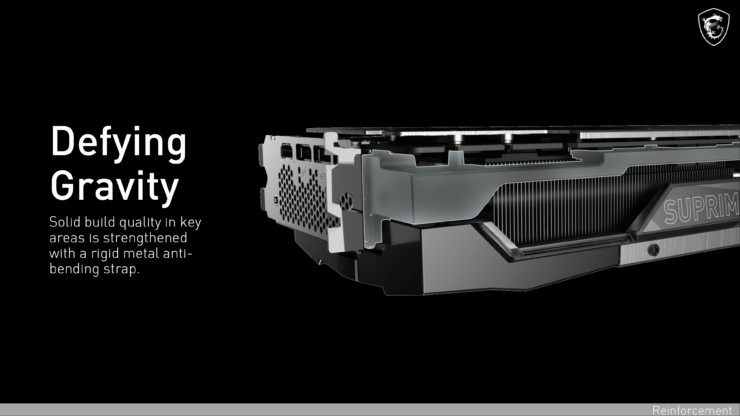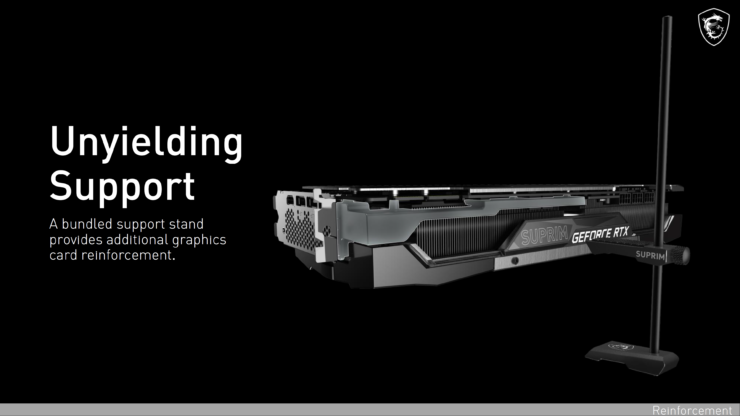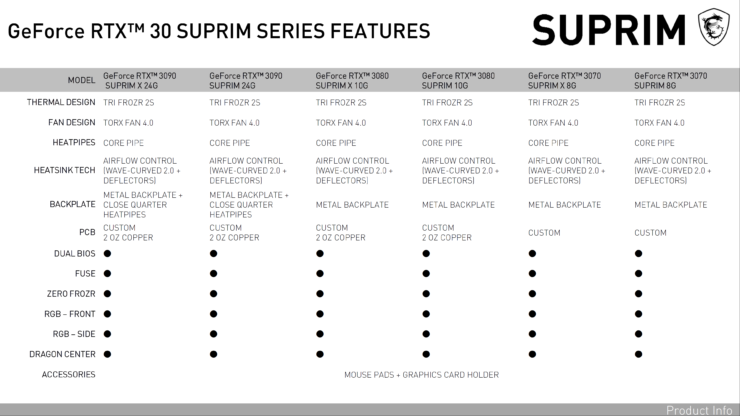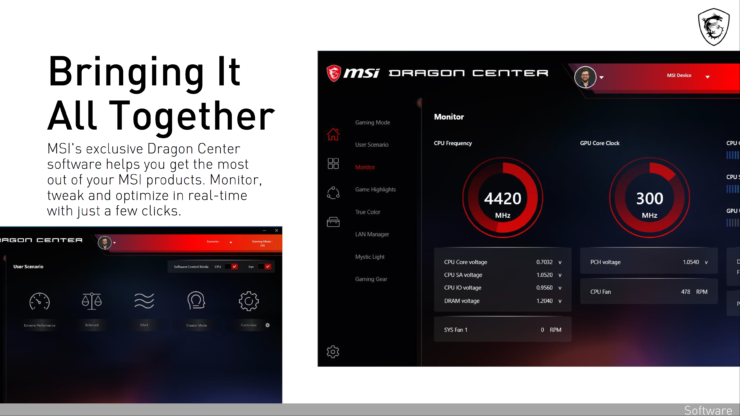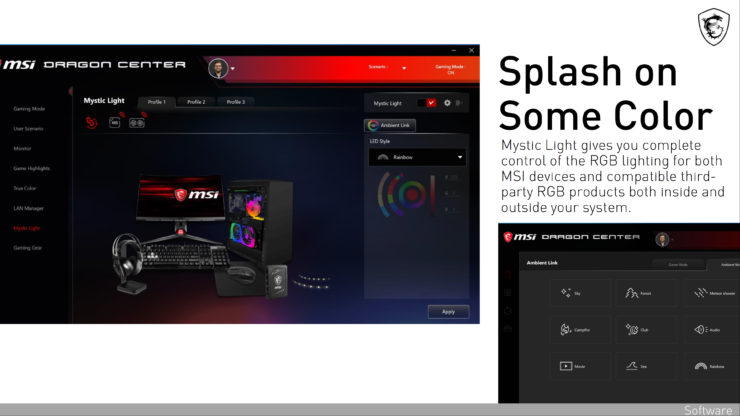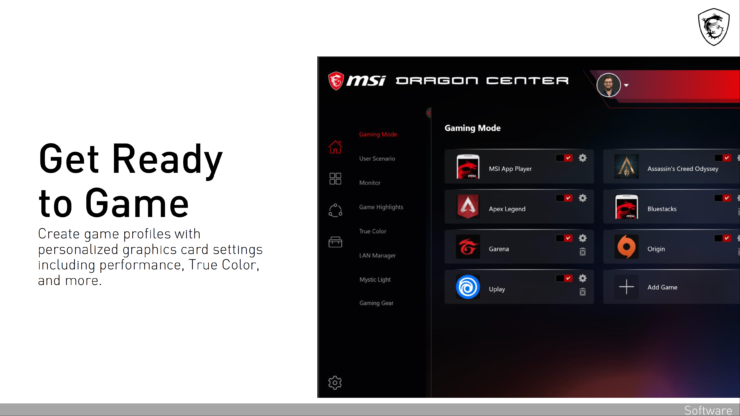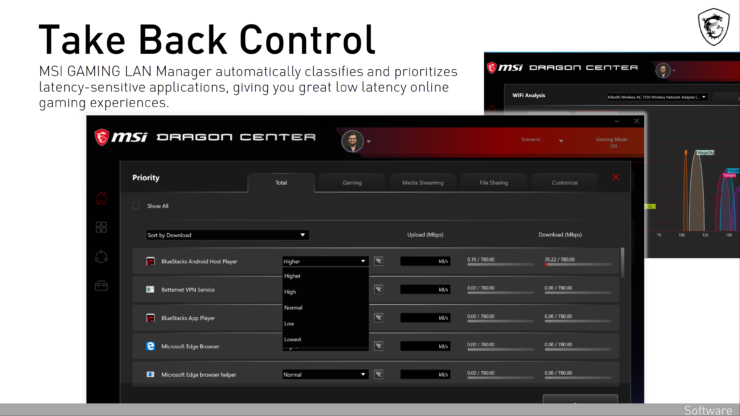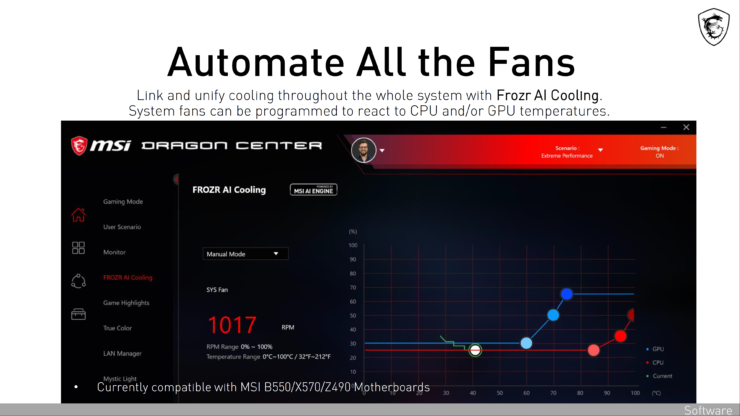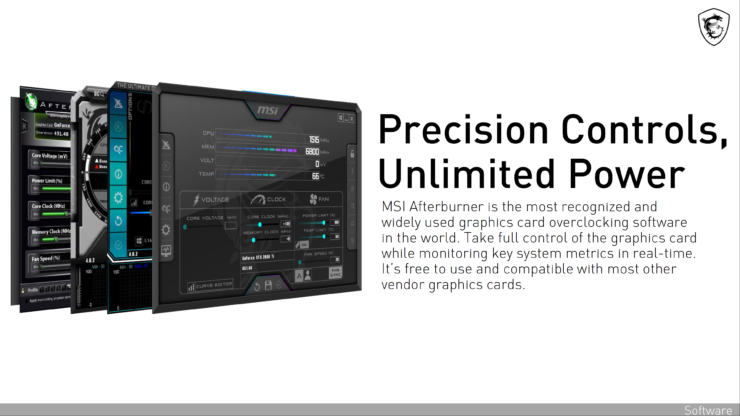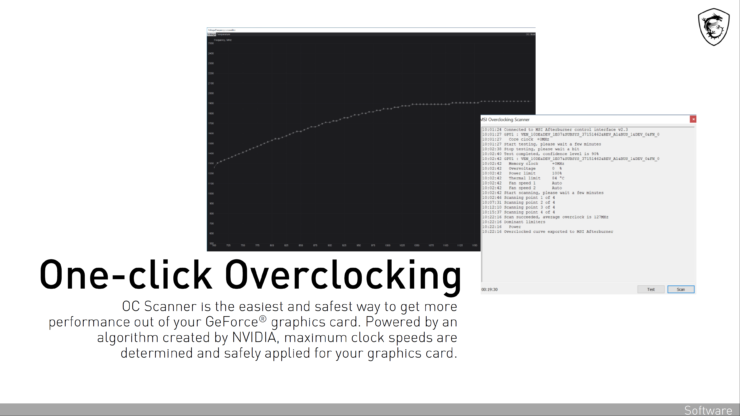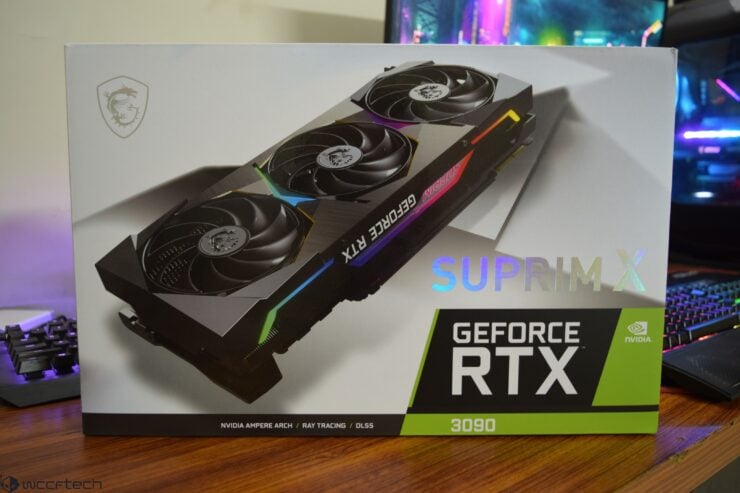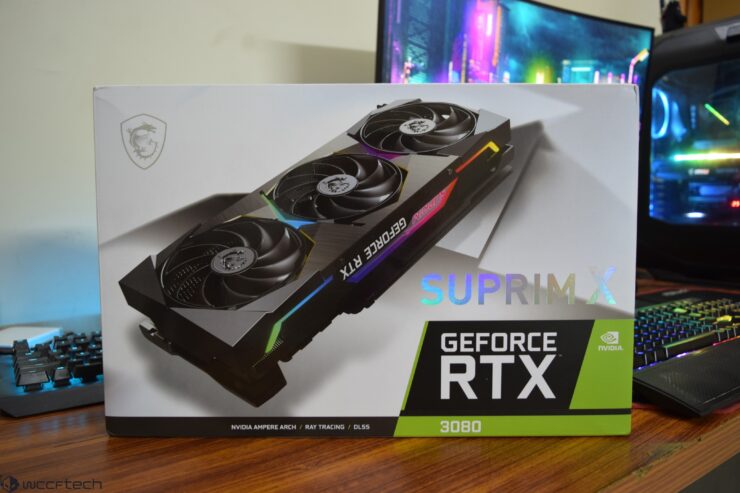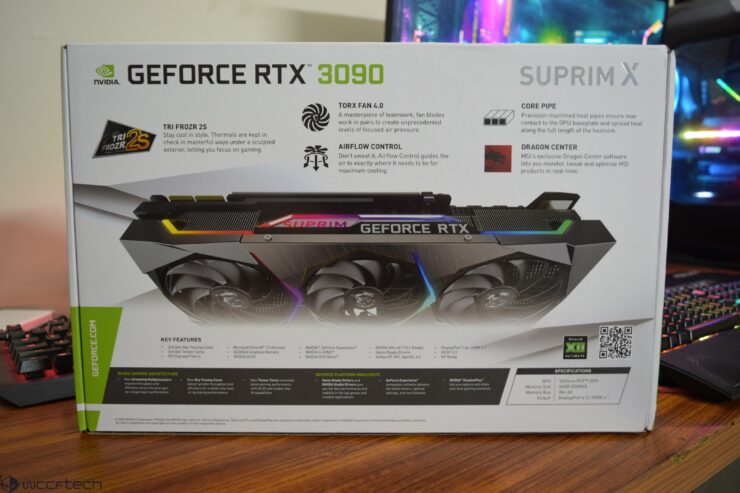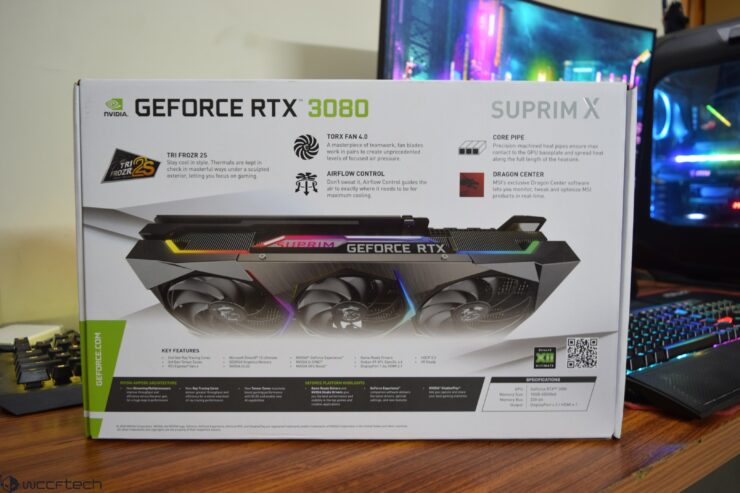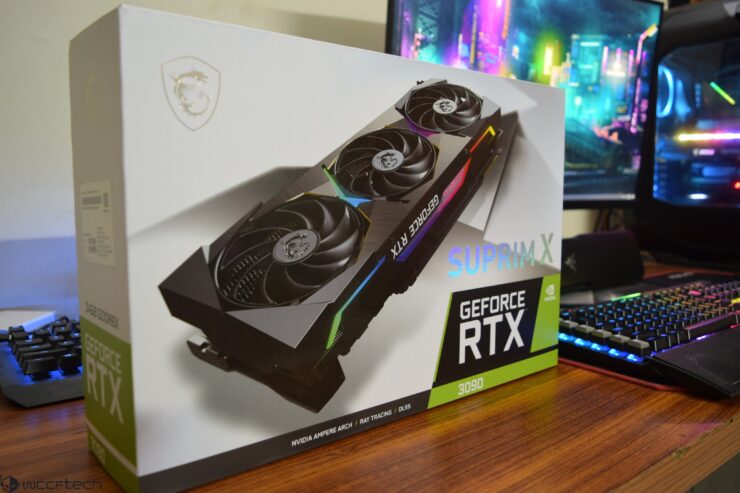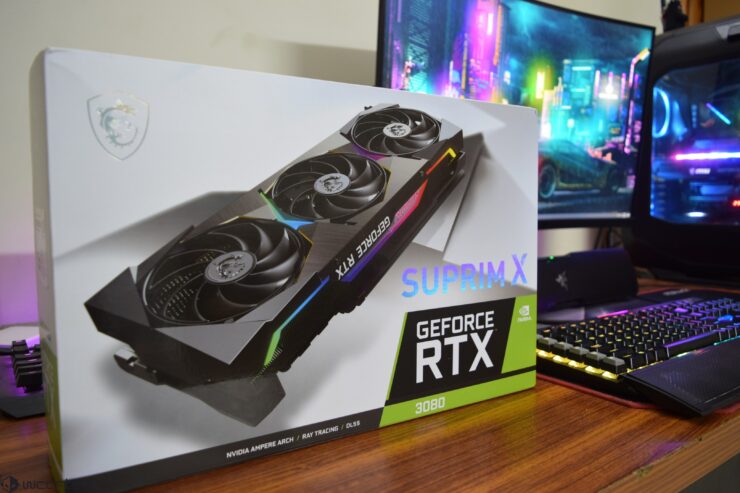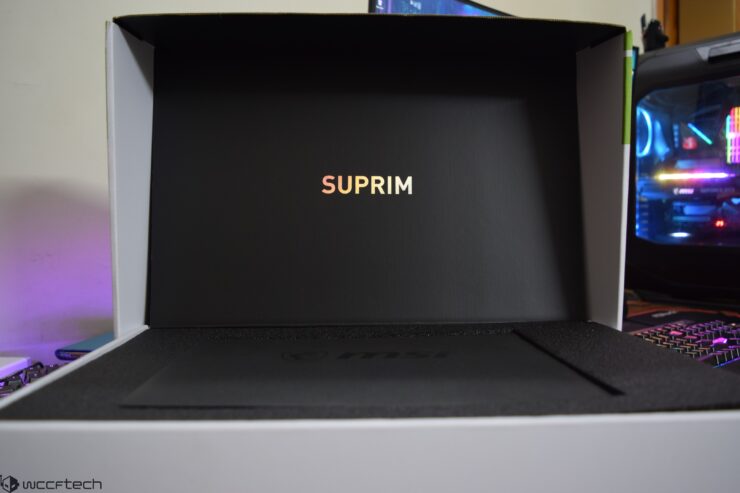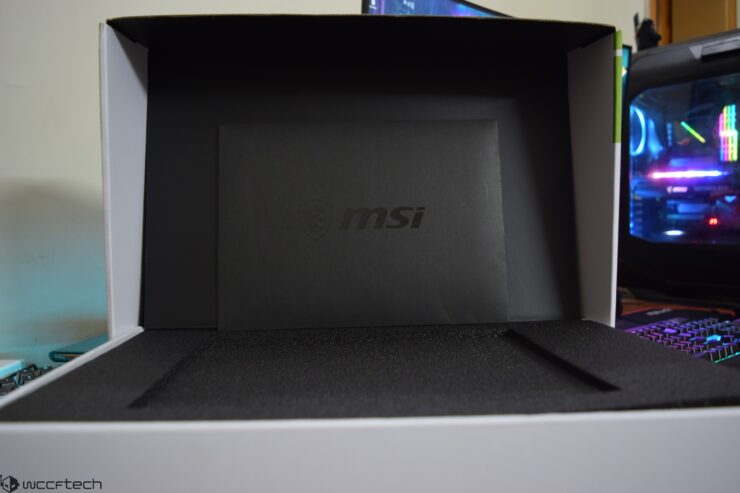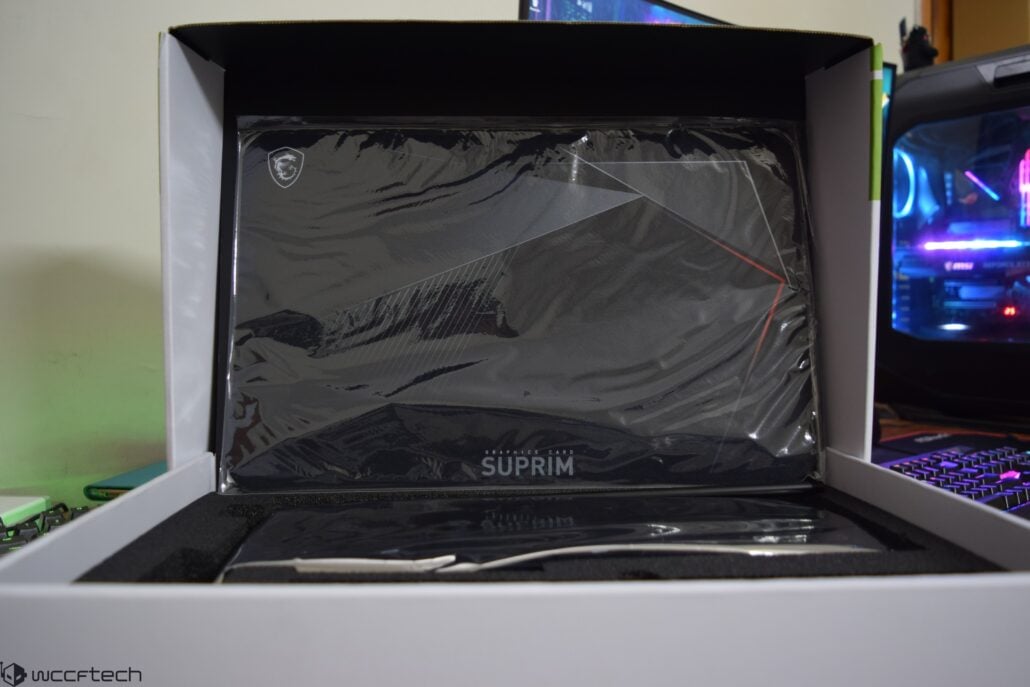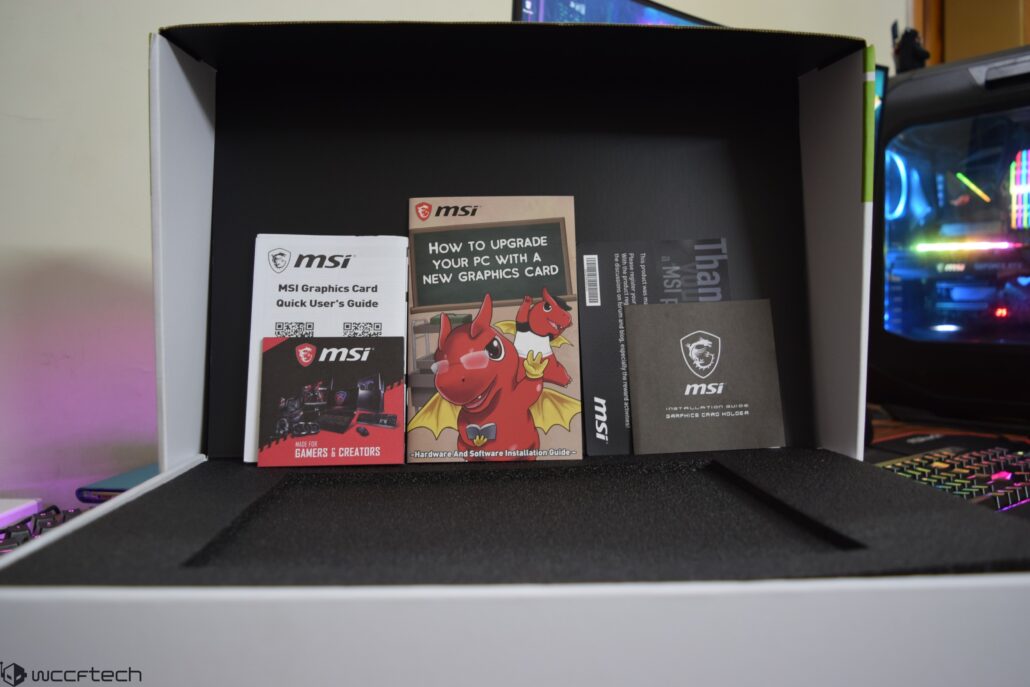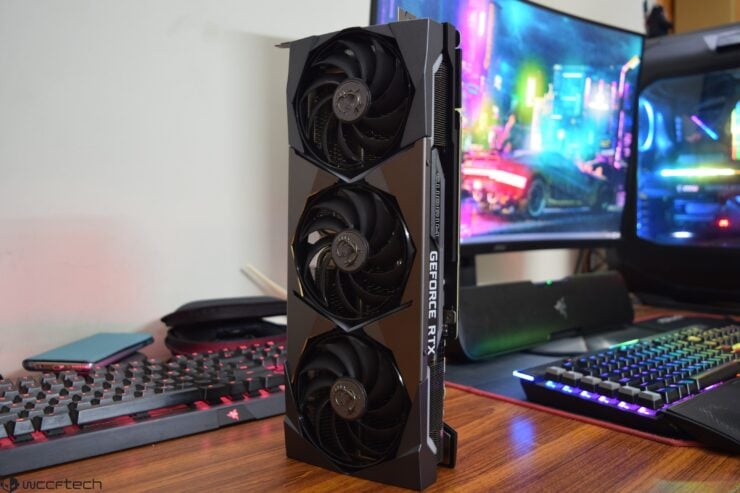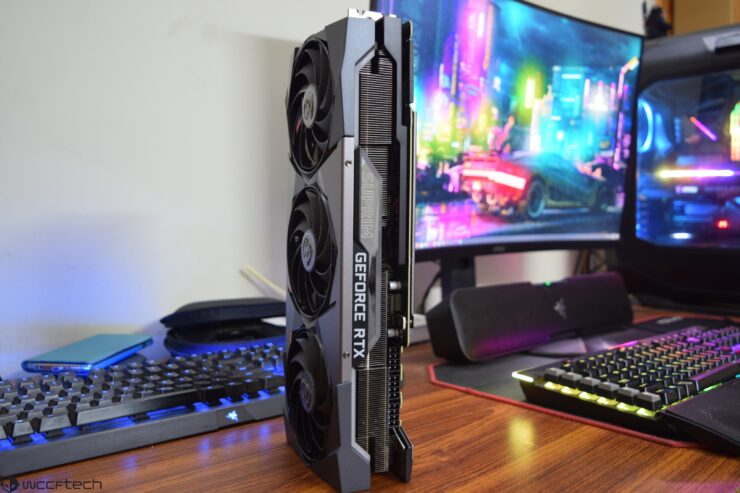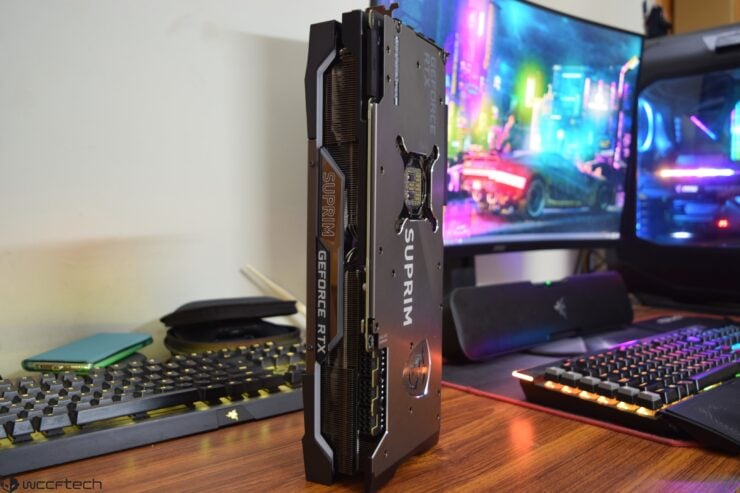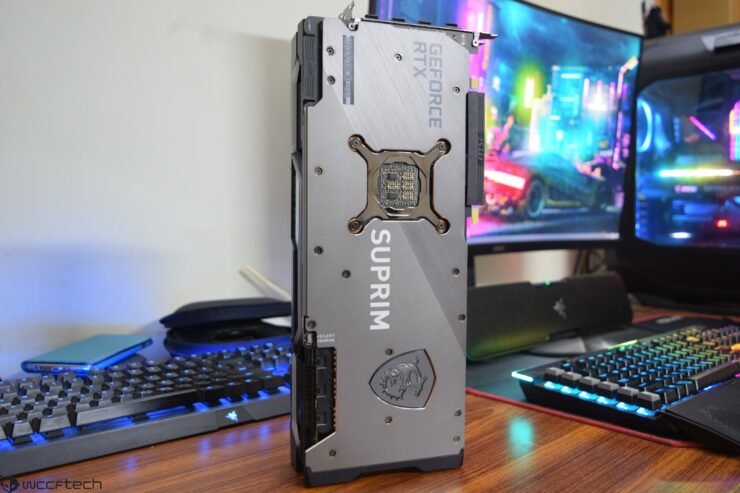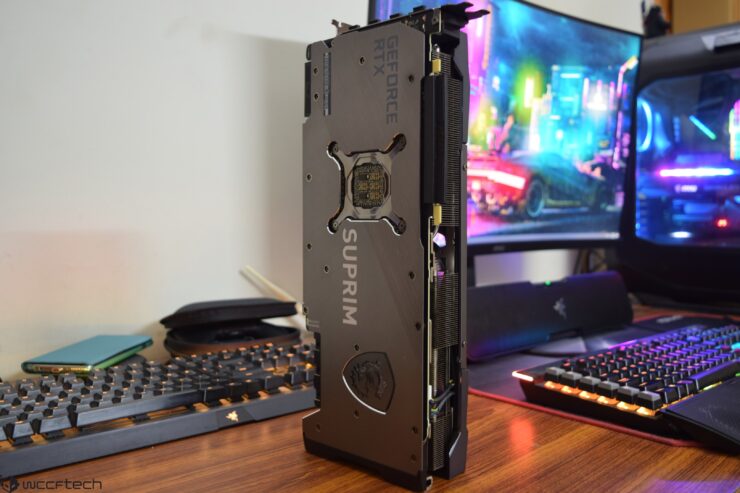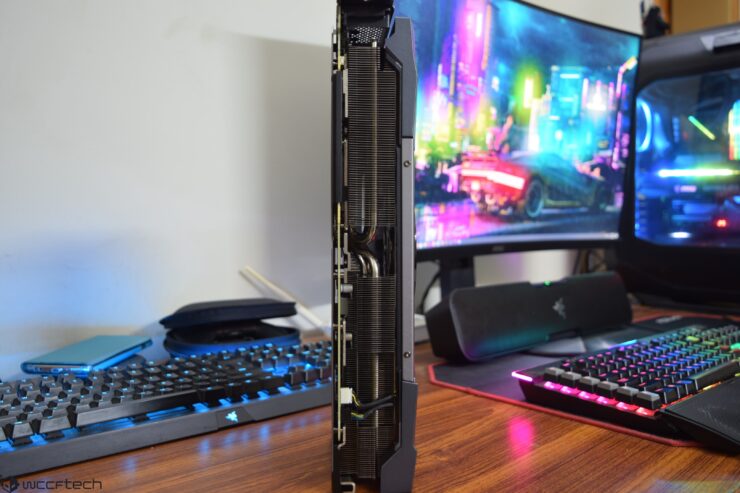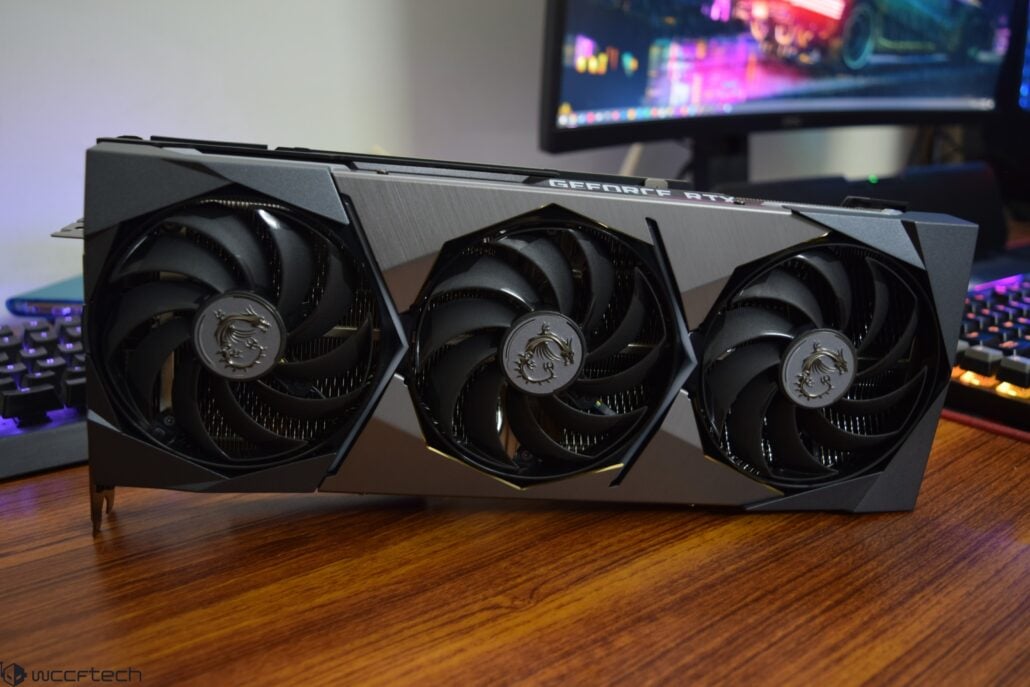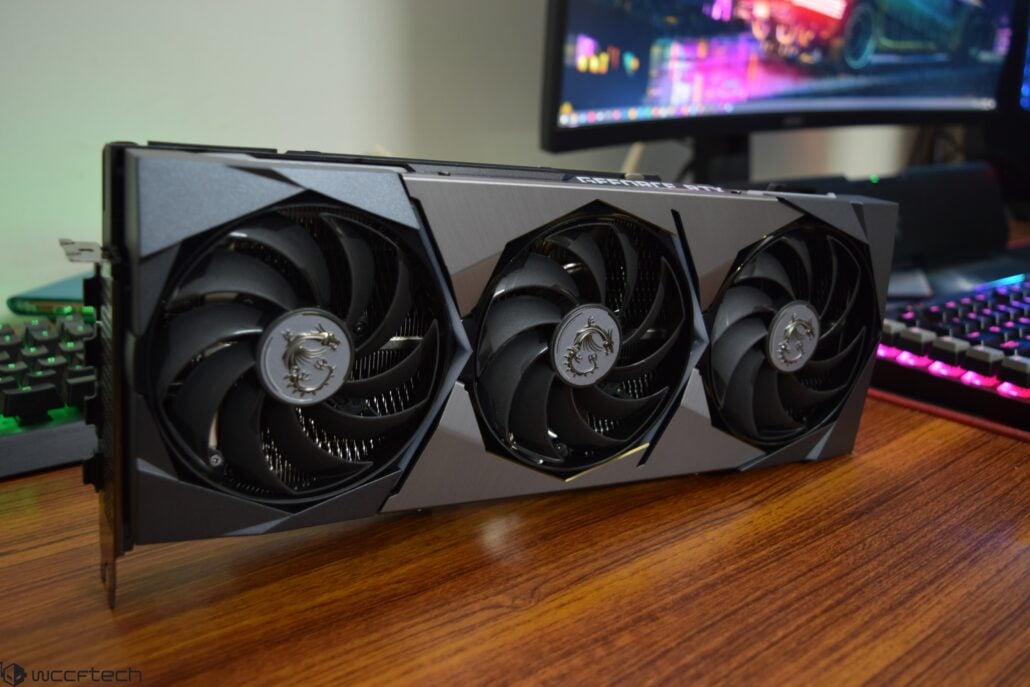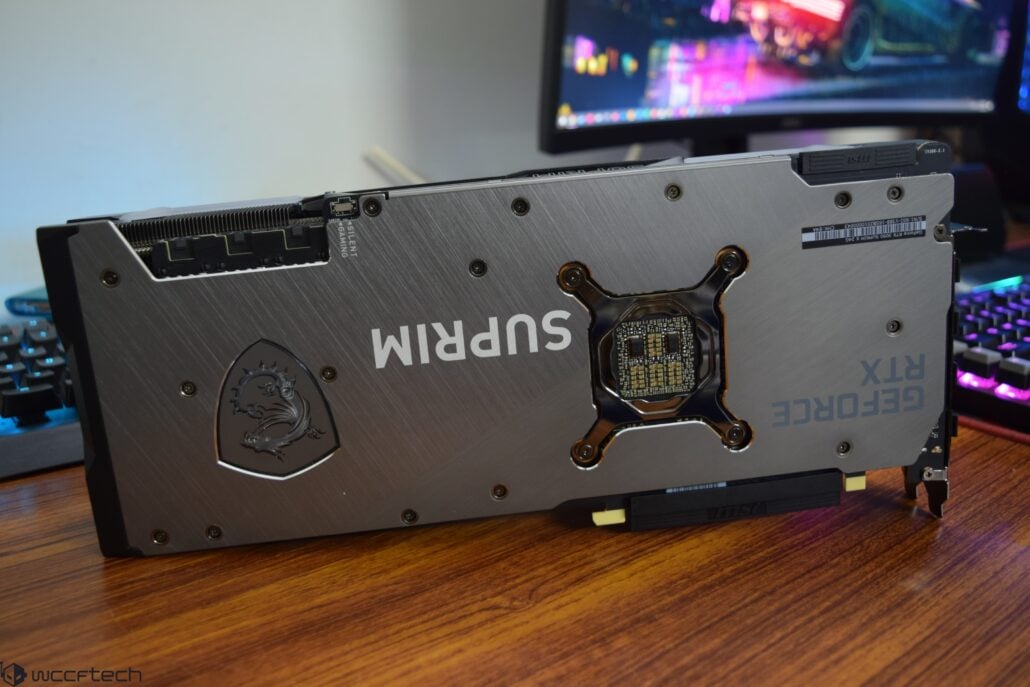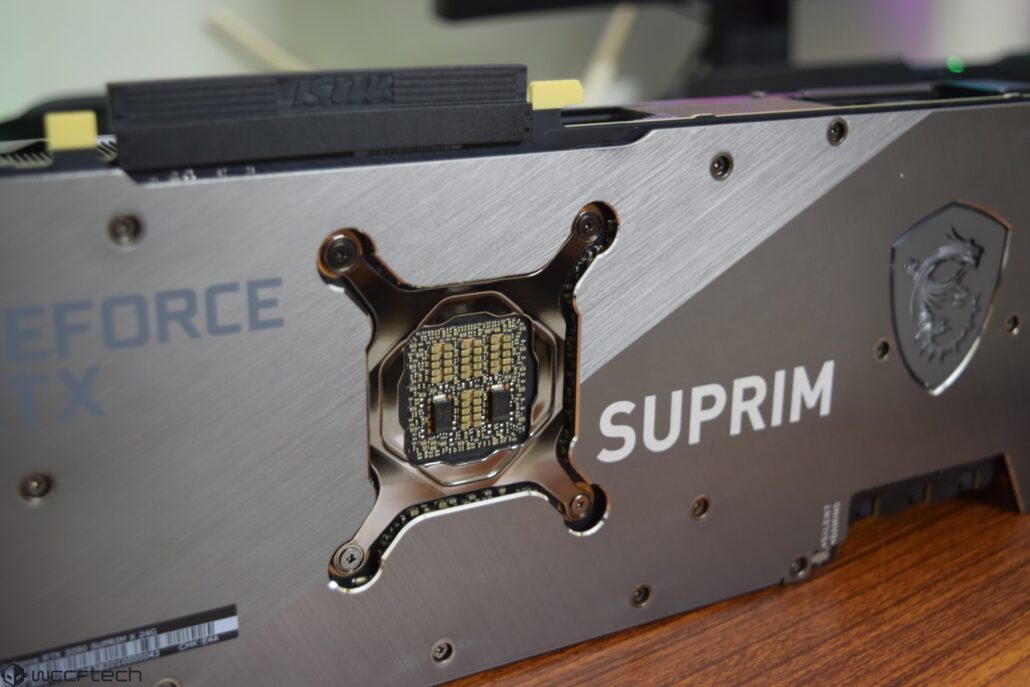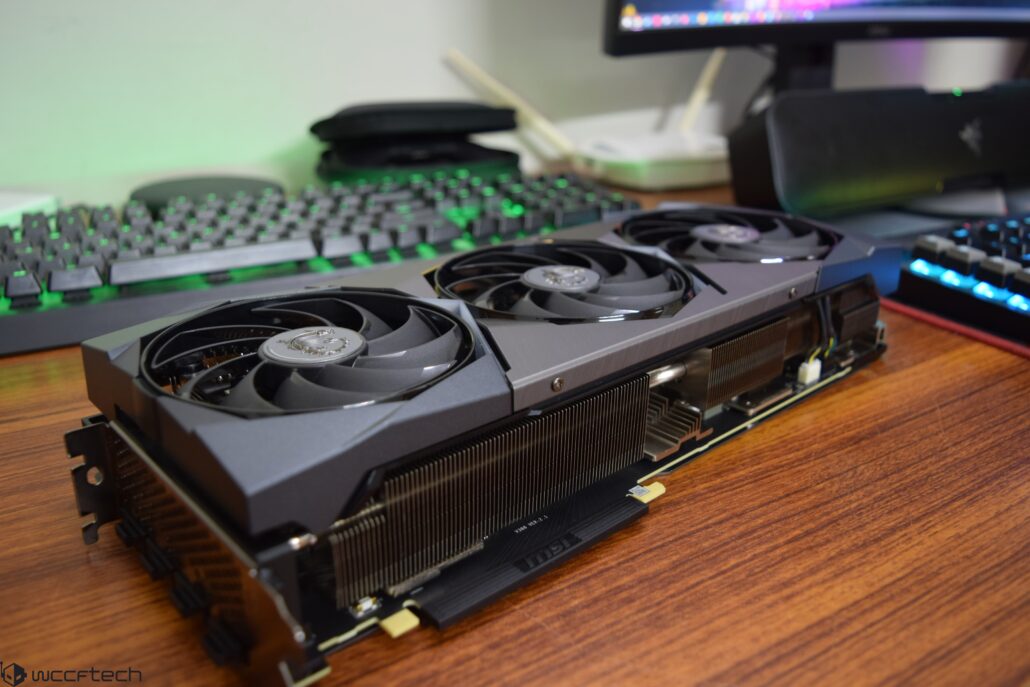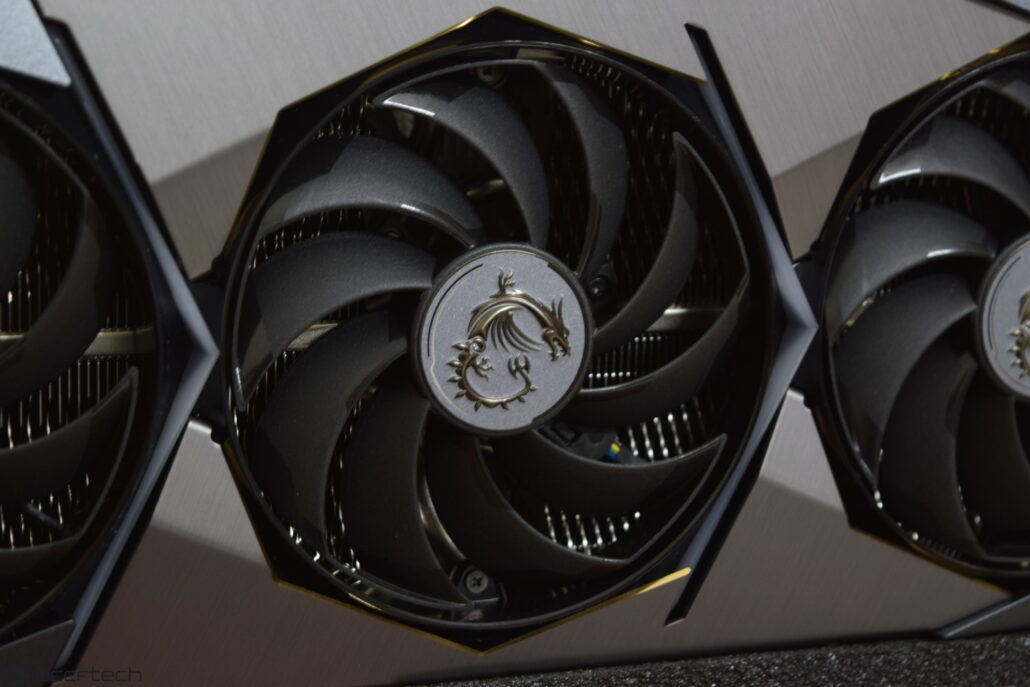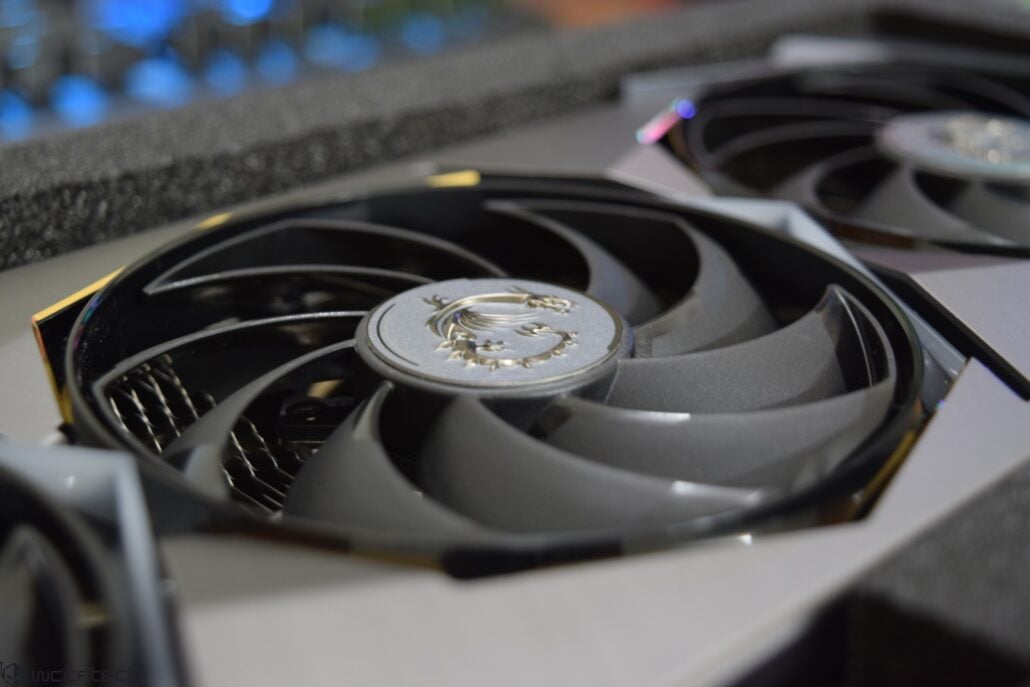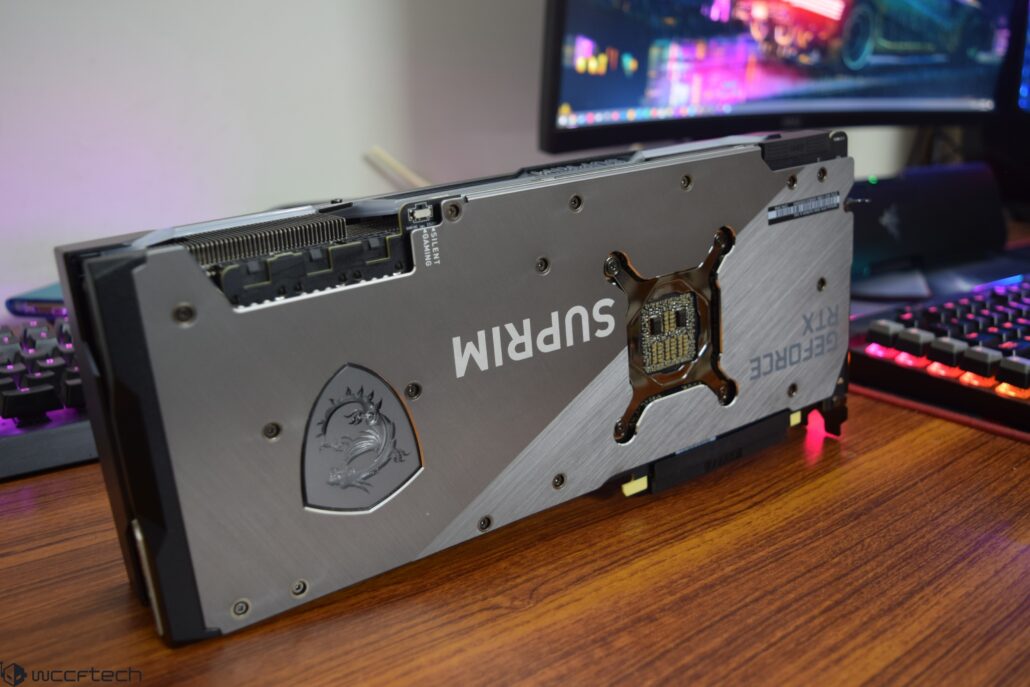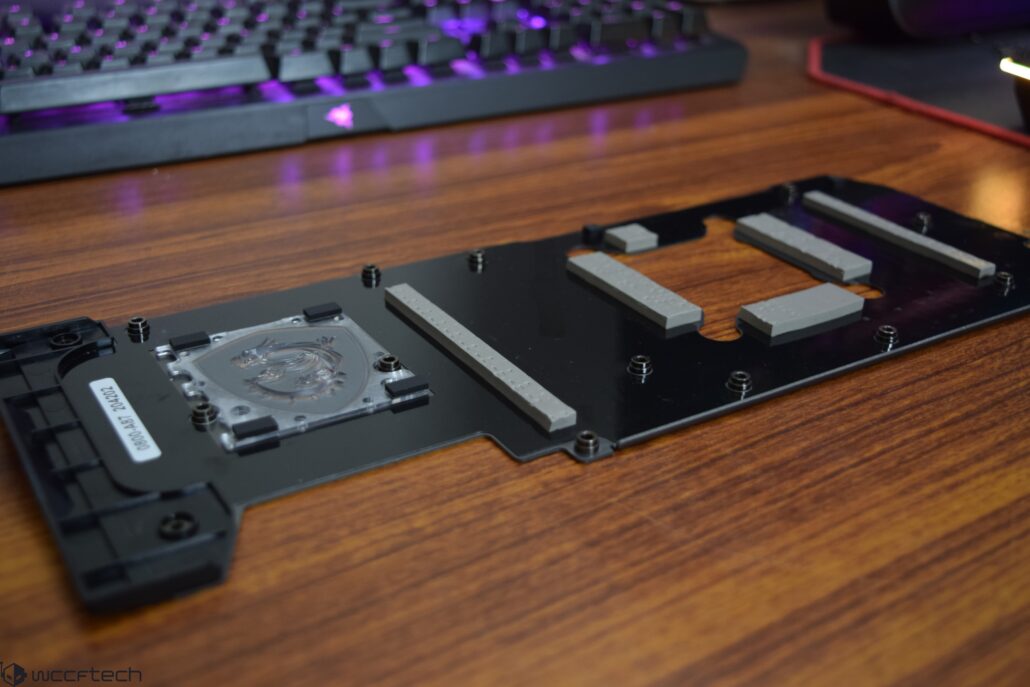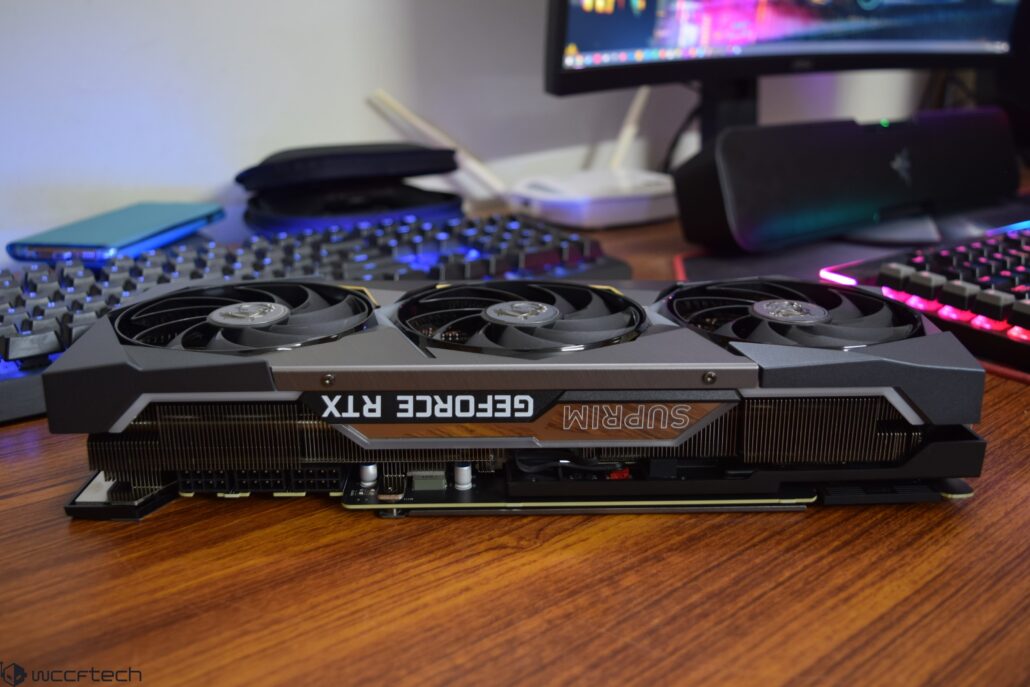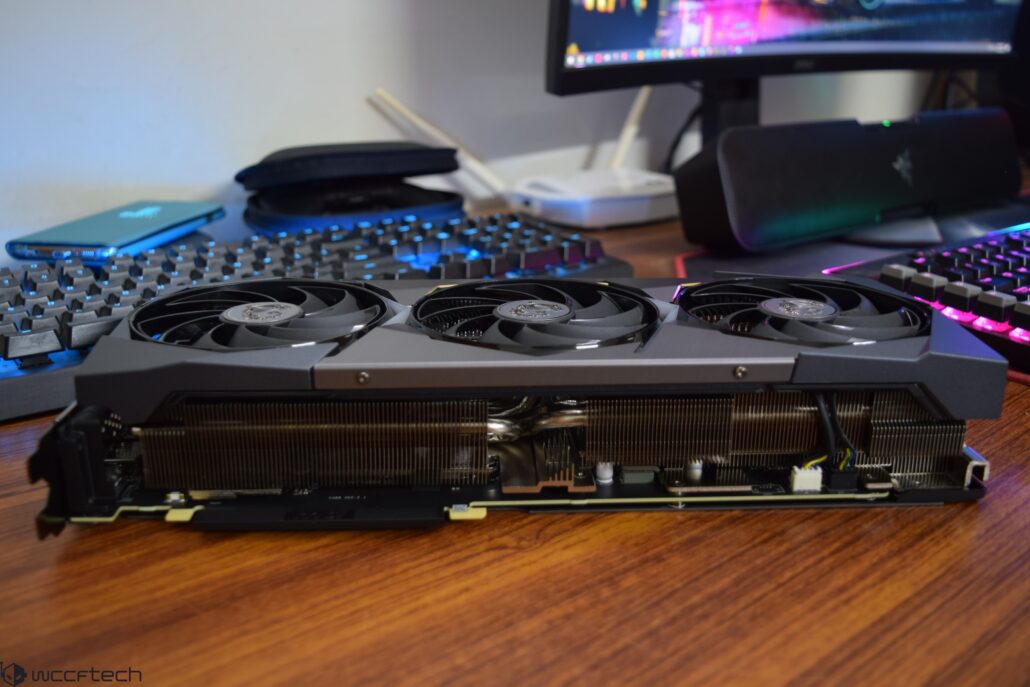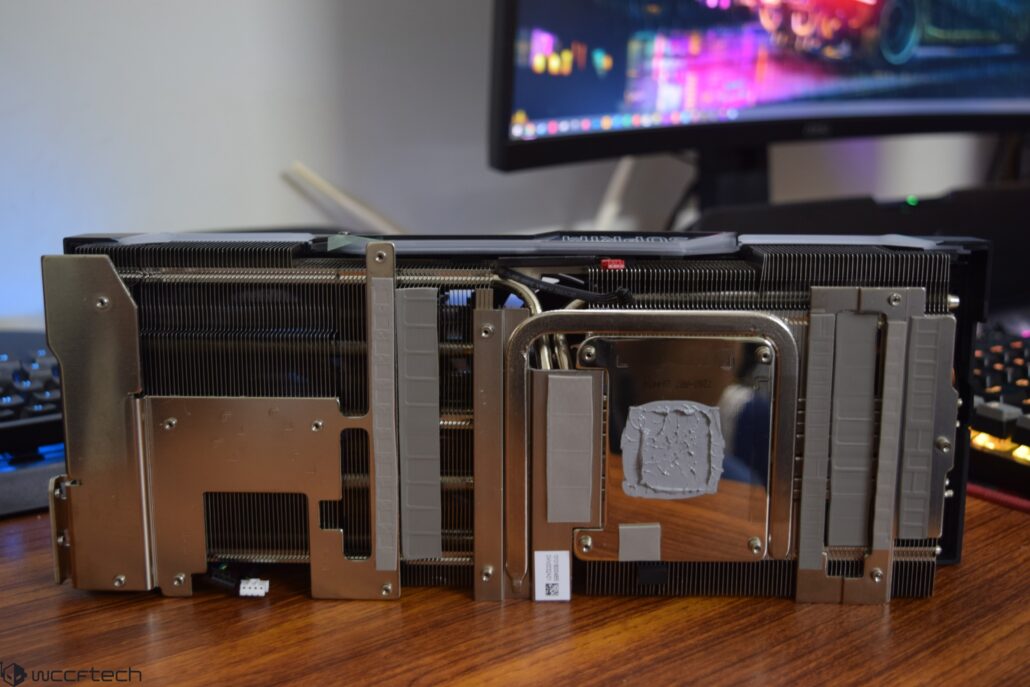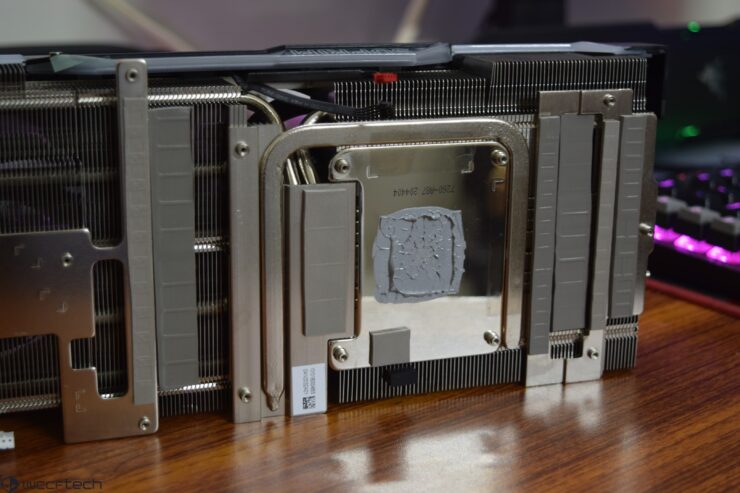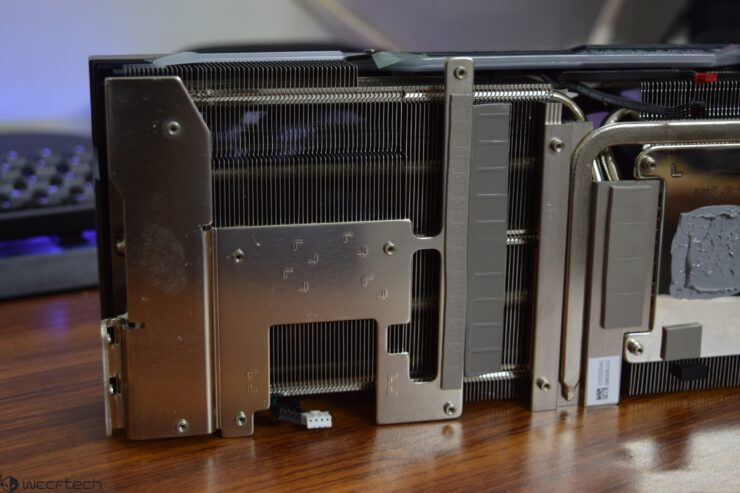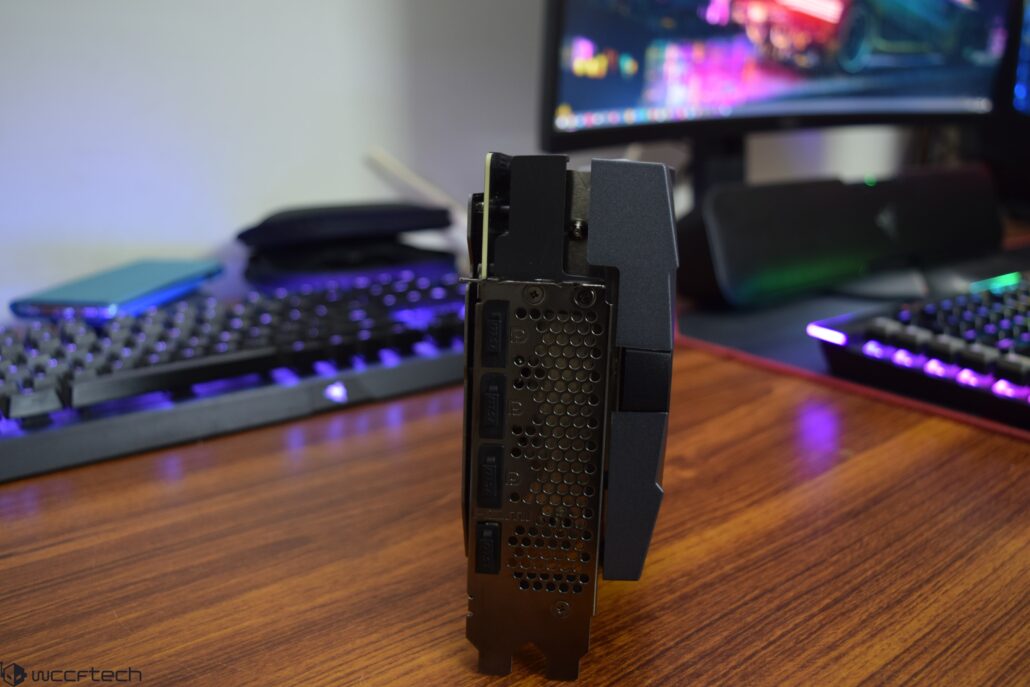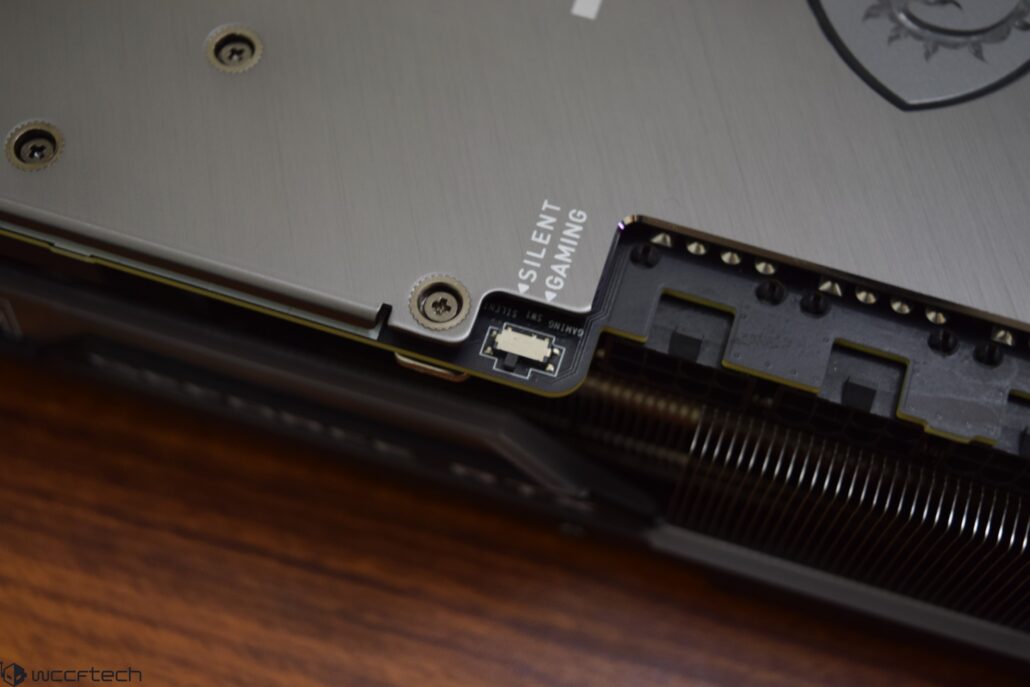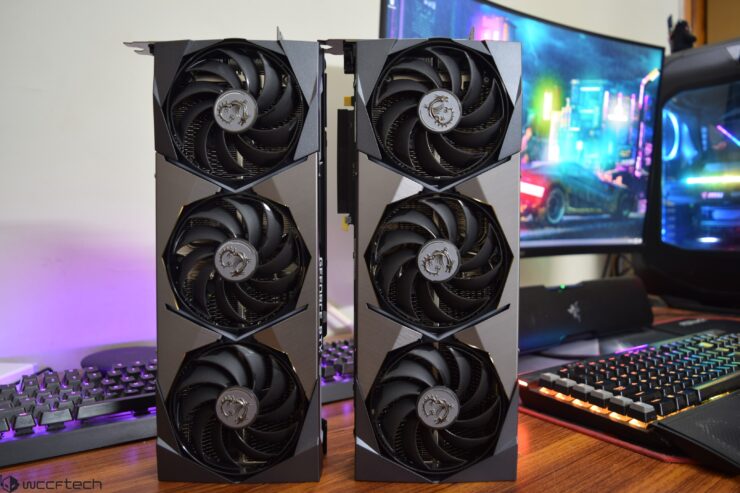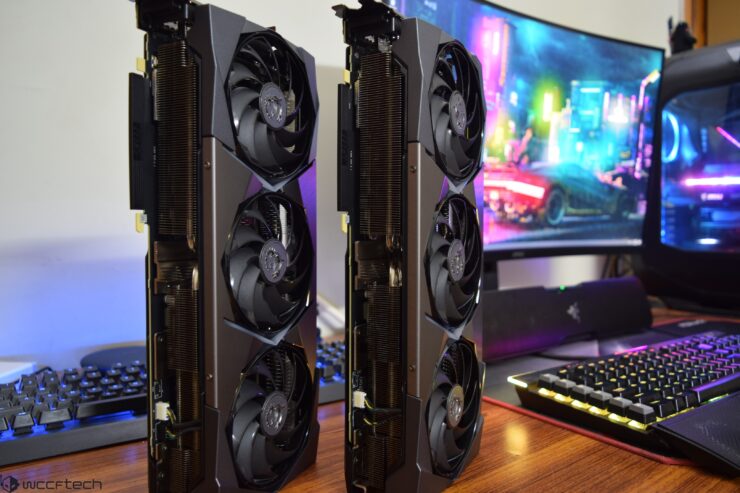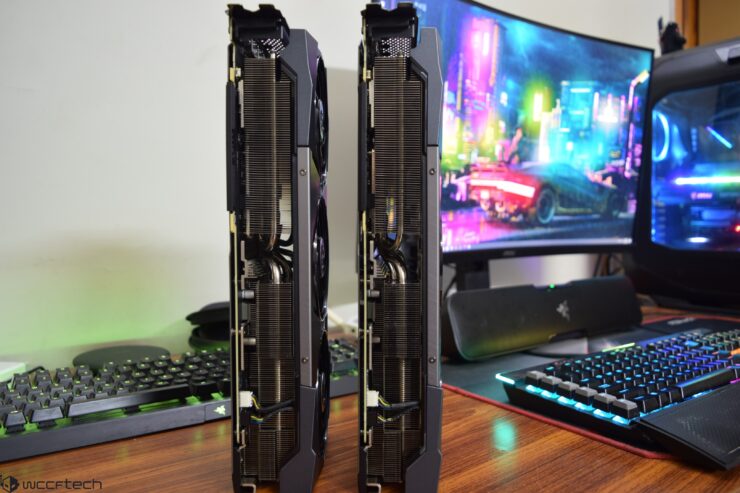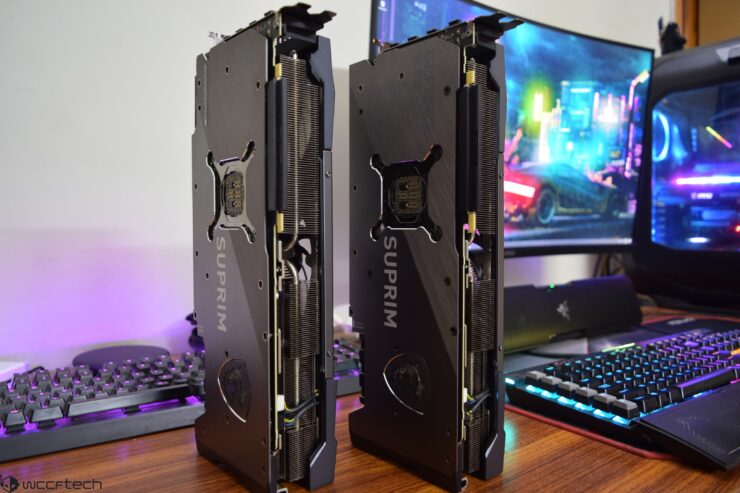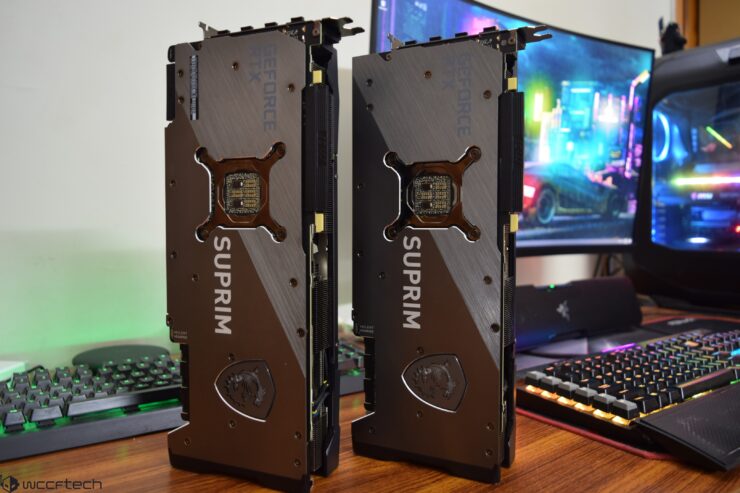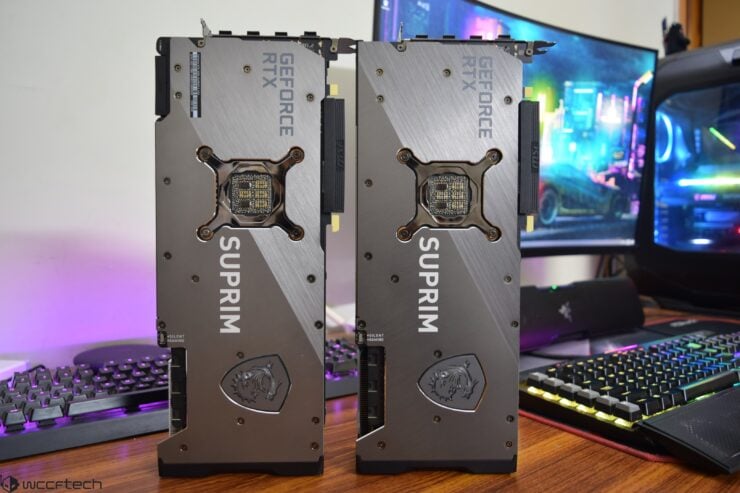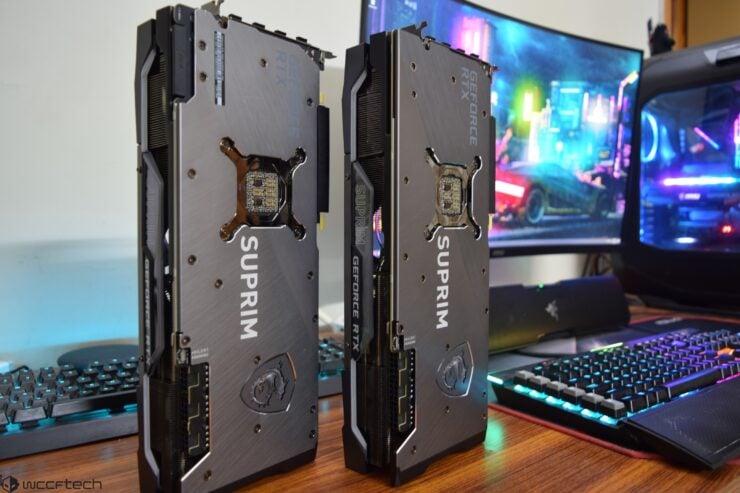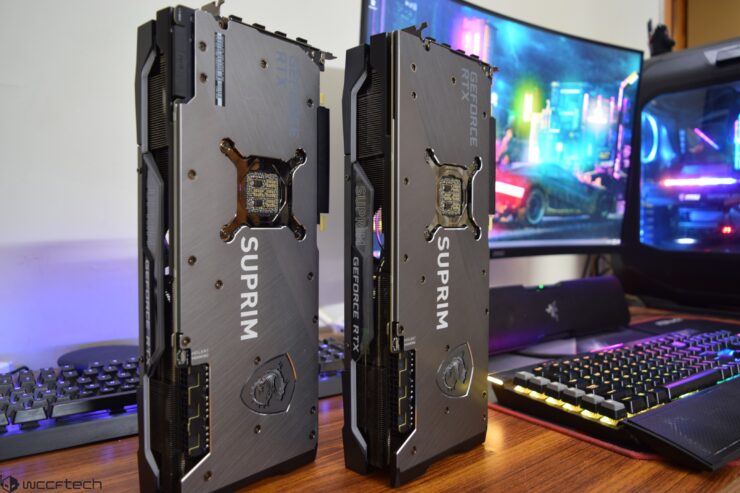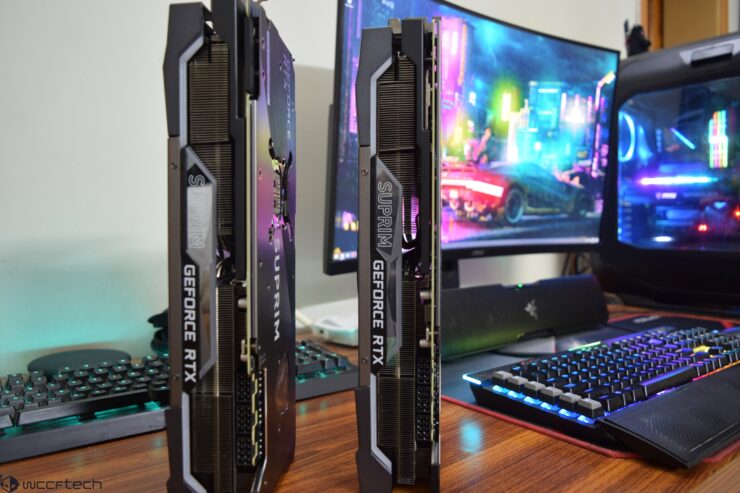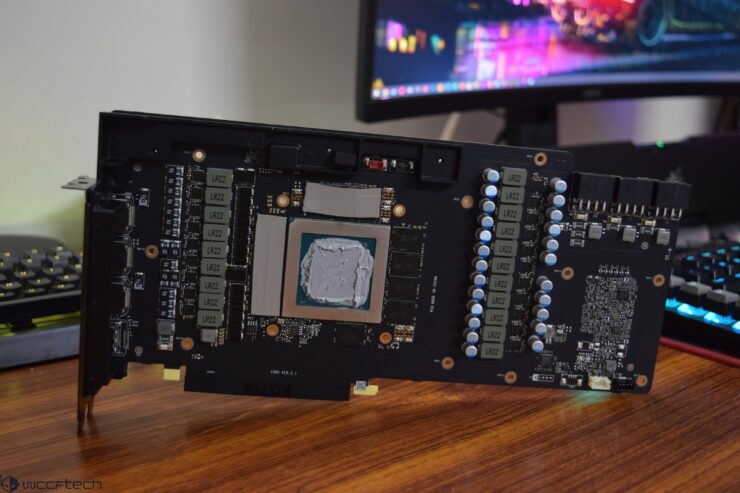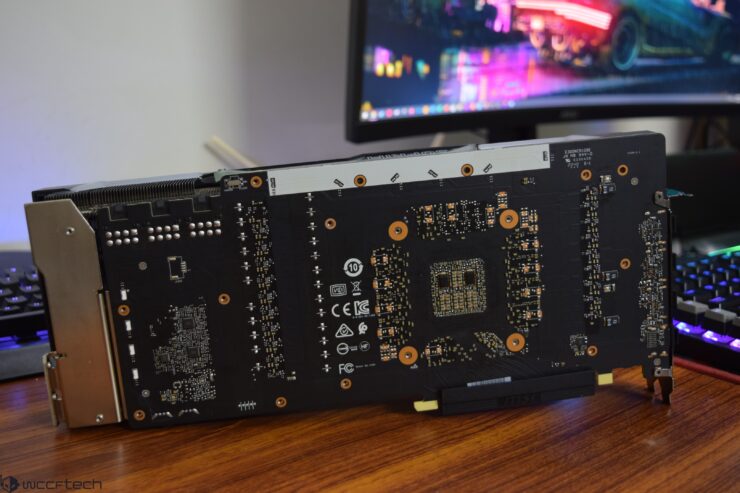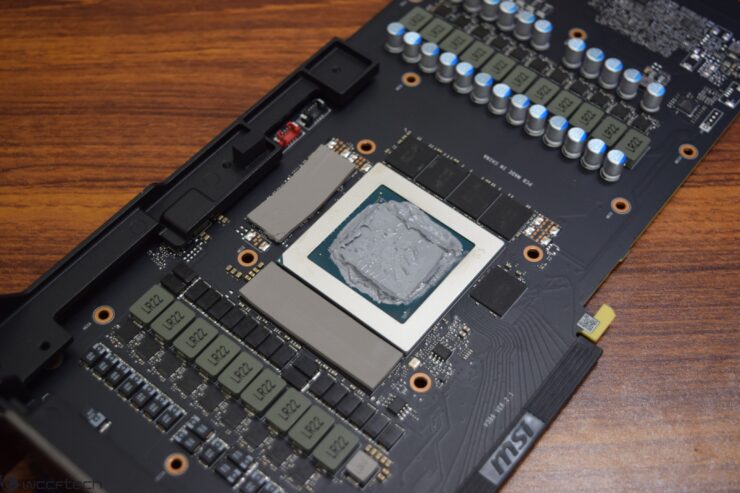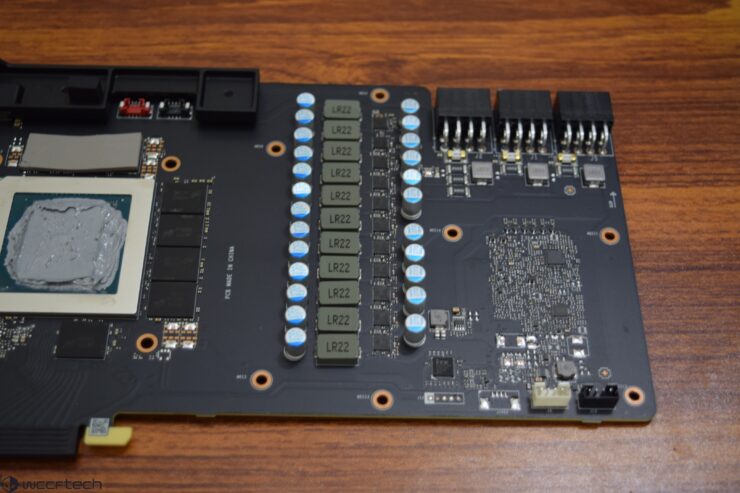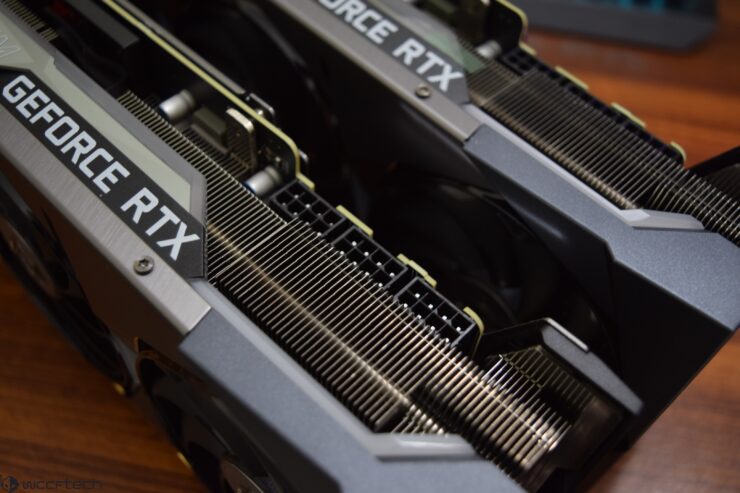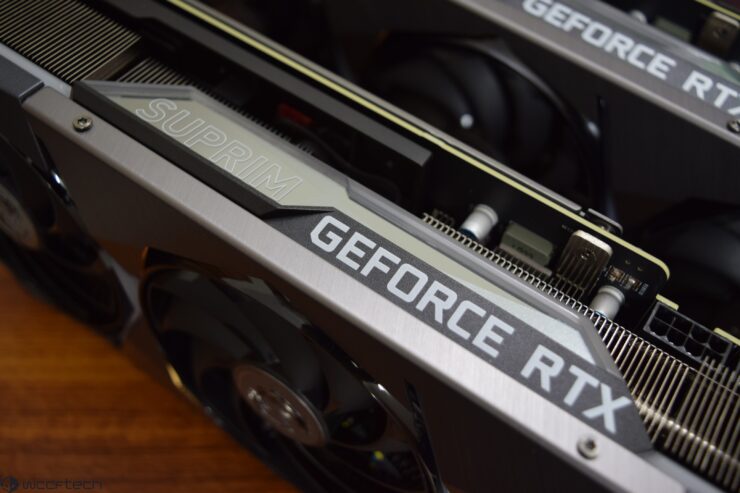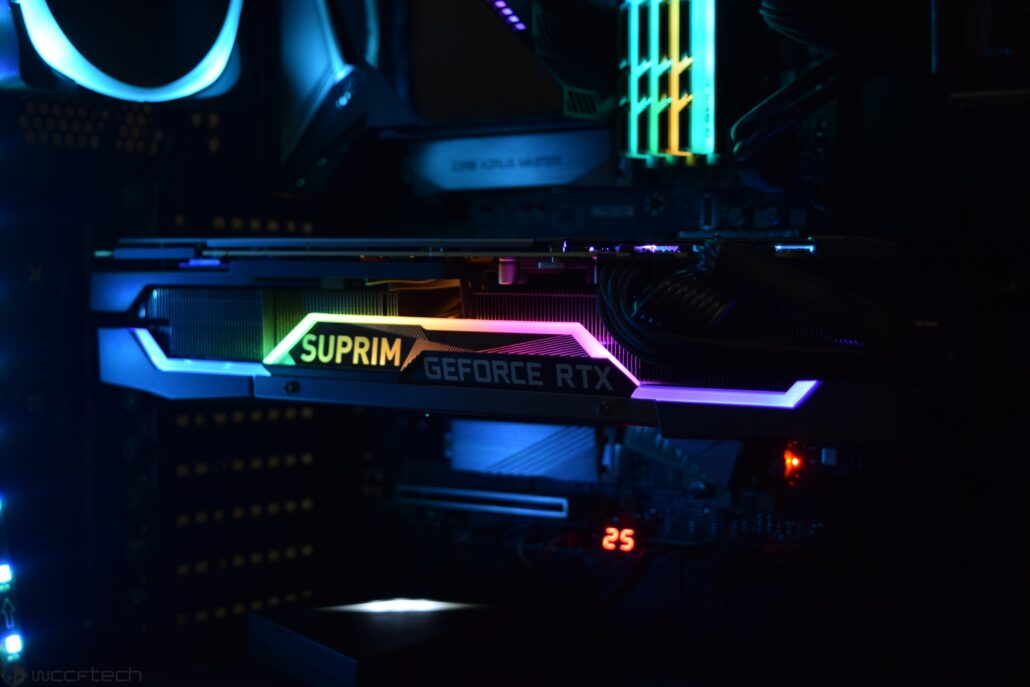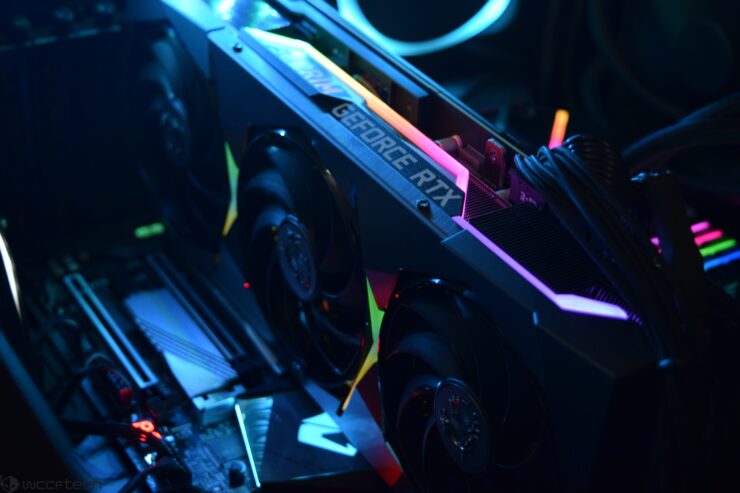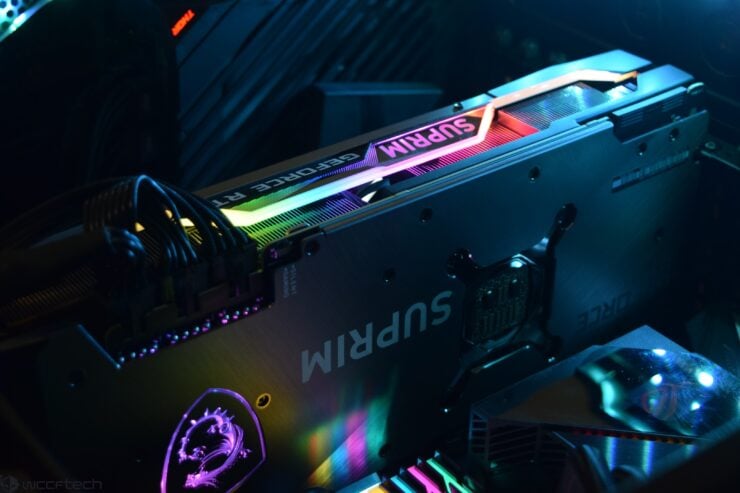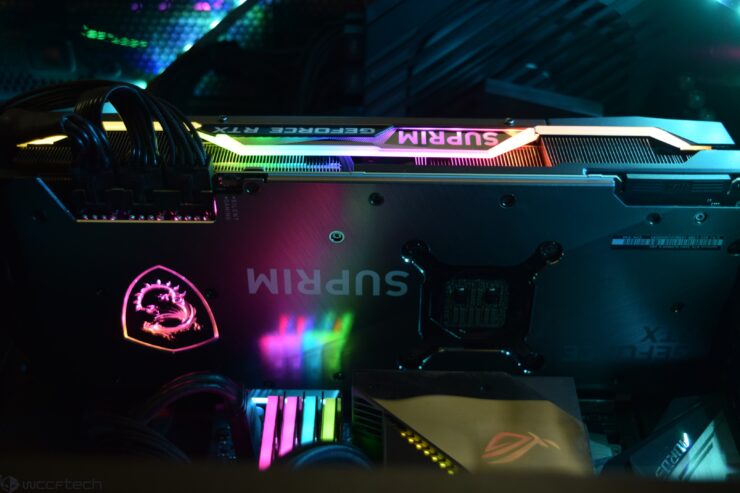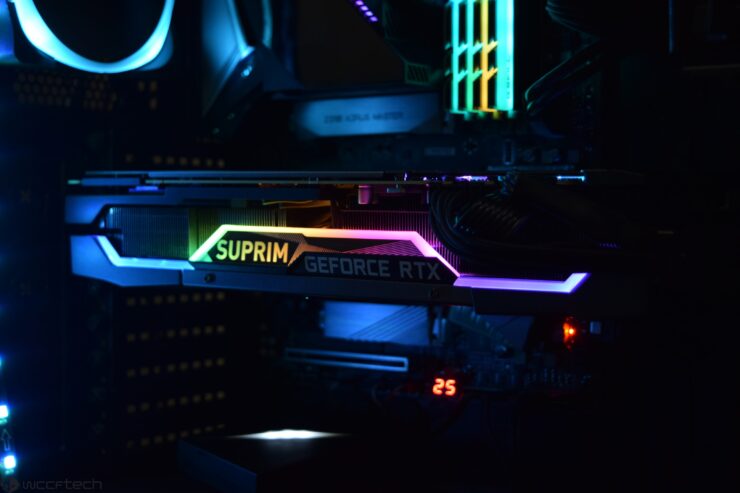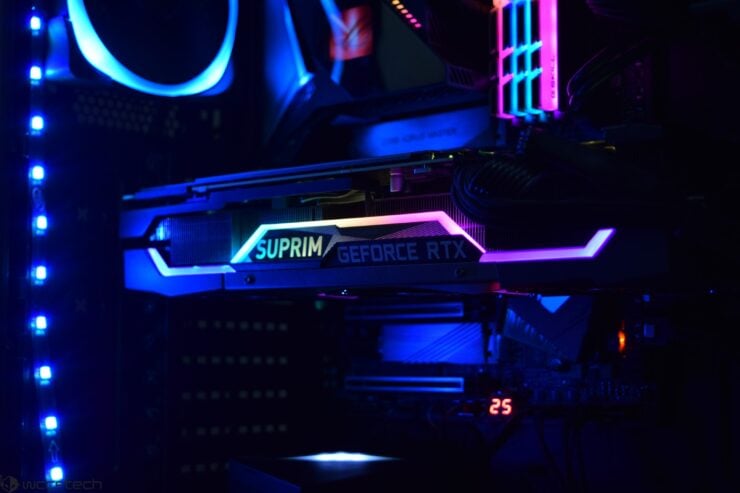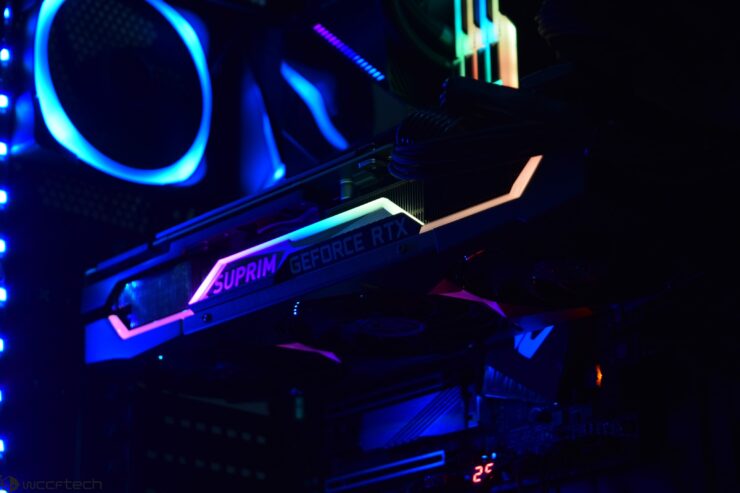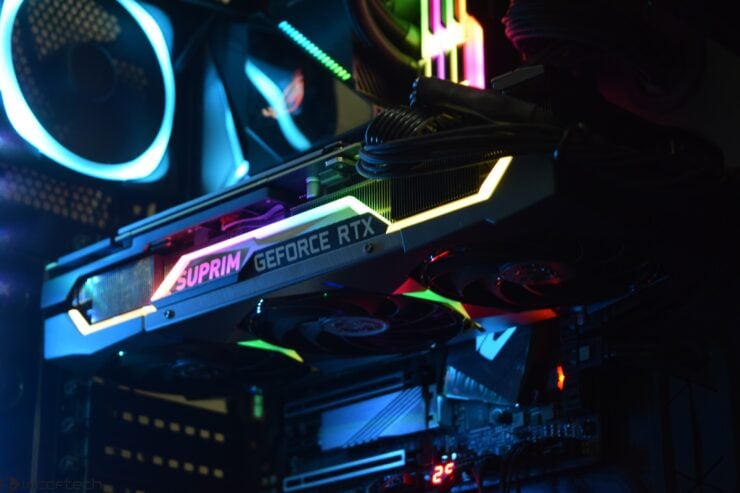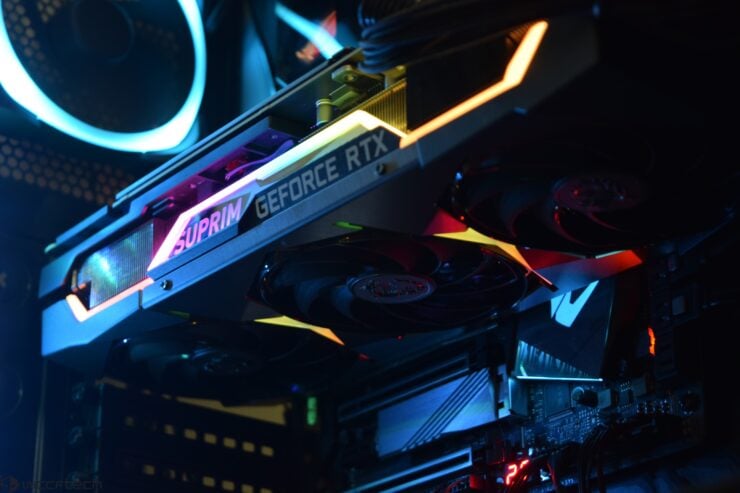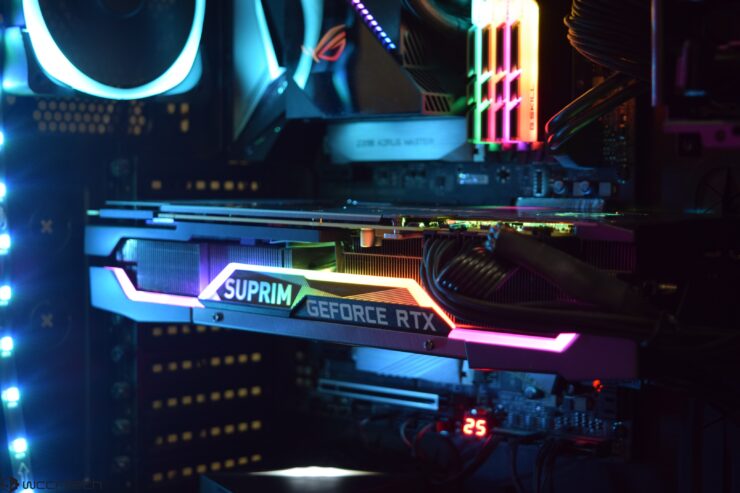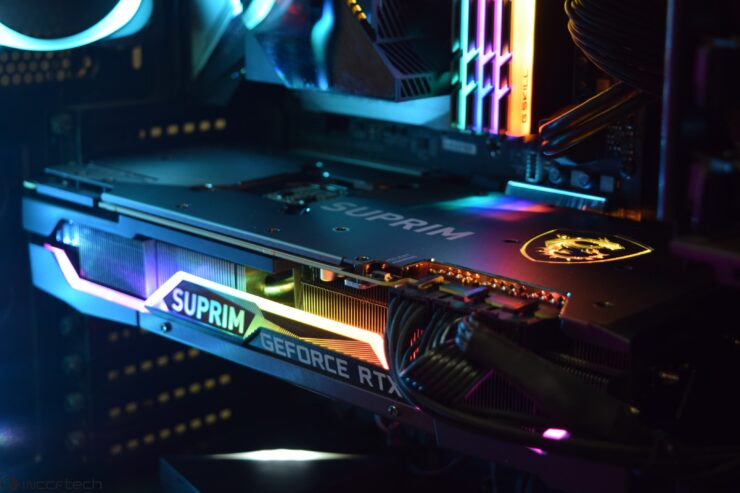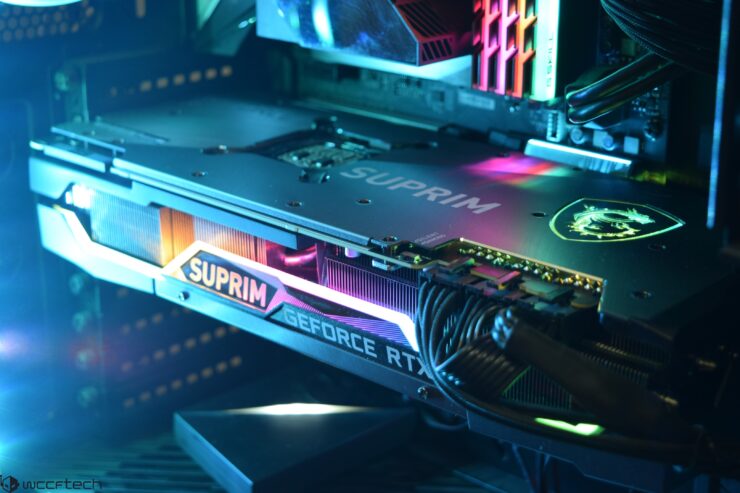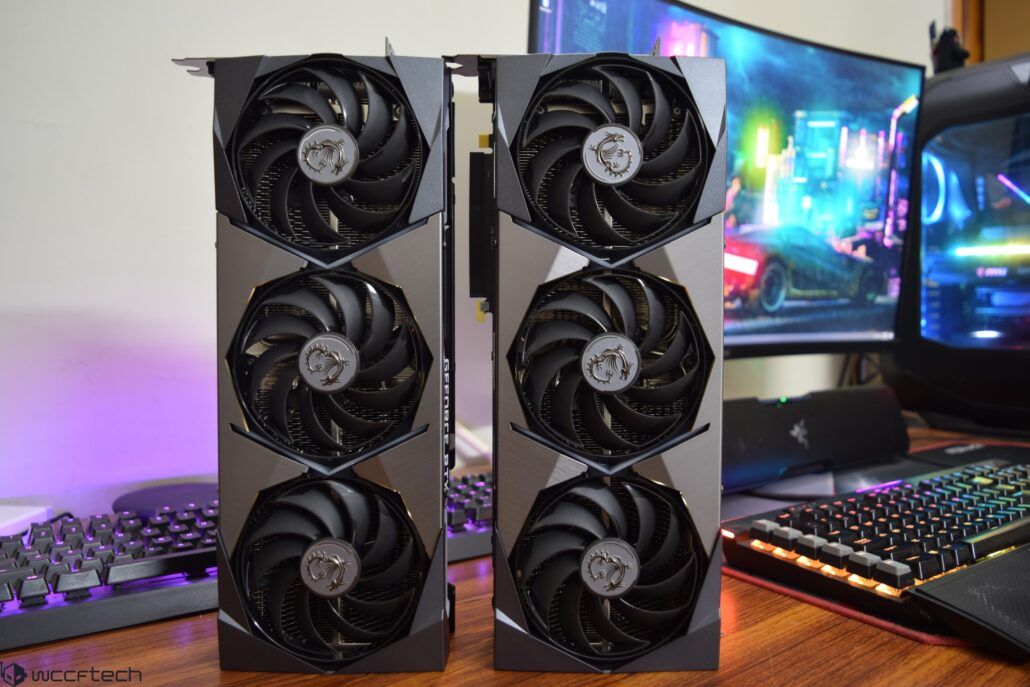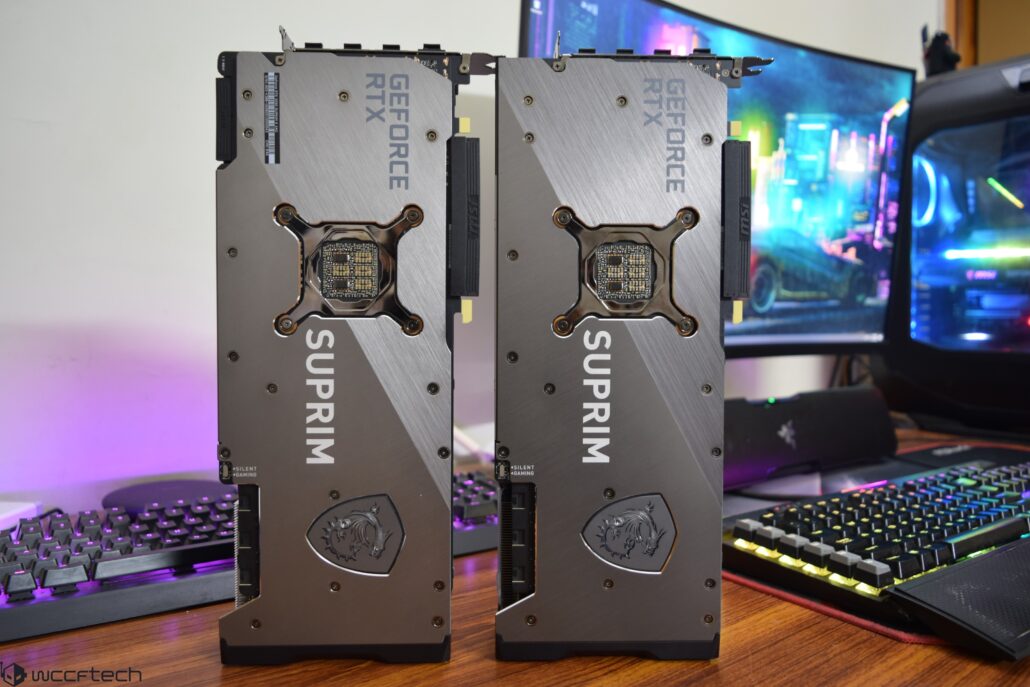Keeping their tradition alive of launching a new graphics architecture every two years, this year, NVIDIA introduces its Ampere GPU. The Ampere GPU is built upon the foundation set by Turing. Termed as its biggest generational leap, the NVIDIA Ampere GPUs excel compared to previous generations at everything.
The Ampere lineup offers faster shader performance, faster ray tracing performance, and faster AI performance. Built on a brand new process node and featuring an architecture designed from the ground up, Ampere is a killer product with lots of numbers to talk about.
The fundamental of Ampere was to take everything NVIDIA learned with its Turing architecture and not only refine it but to use its DNA to form a product in a completely new performance category. Tall claims were made by NVIDIA when they introduced its Ampere lineup earlier this month & we will be finding out whether NVIDIA hit all the ticks with its Ampere architecture as this review will be your guiding path to see what makes Ampere and how it performs against its predecessors.
NVIDIA GeForce RTX 30 Series Gaming Graphics Cards – The Biggest GPU Performance Leap in Recent History
Turing wasn’t just any graphics core, it was the graphics core that was to become the foundation of future GPUs. The future is realized now with next-generation consoles going deep in talks about ray tracing and AI-assisted super-sampling techniques. NVIDIA had a head start with Turing and its Ampere generation will only do things infinitely times better.
The Ampere GPU does many traditional things that we would expect from a GPU, but at the same time, also breaks the barrier when it comes to untraditional GPU operations. Just to sum up some features:
- New Streaming Multiprocessor (SM)
- New Turing Tensor Cores
- New Real-Time Ray Tracing Acceleration
- New Shading Enhancements
- New Deep Learning Features For Graphics & Inference
- New GDDR6X High-Performance Memory Subsystem
- New 2nd Generation NVLINK Interconnect
- New HDMI 2.1 Display Engine & Next-Gen NVENC/NVDEC
The technologies mentioned above are some of the main building blocks of the Ampere GPU, but there’s more within the graphics core itself which we will talk about in detail so let’s get started.
NVIDIA GeForce RTX 30 Series Pricing Per Segment
NVIDIA’s GeForce RTX 30 series is made up of a diverse portfolio of graphics cards. Currently, you will only be limited to the higher-end configurations starting at $499 US for the GeForce RTX 3070, $699 US for the GeForce RTX 3080, and $1499 US for the GeForce RTX 3090. NVIDIA themselves call the GeForce RTX 3080 the flagship graphics card and not the GeForce RTX 3090.
The RTX 3080 & RTX 3070 are both priced well and in-line with their predecessors but the GeForce RTX 3090 goes all out with a price of $1499 US. NVIDIA calls the GeForce RTX 3090 the “BFGPU” and as per the terminology, it seems like this is a new marketing name for the Titan graphics card. It is likely that we could see a Titan based card under the Quadro branding with faster specs out of the box but the GeForce RTX 3090 is purely a gaming graphics card first with all the horsepower for intense professional and workstation workloads.
With that said, the GeForce RTX 3080 replaces the RTX 2080 SUPER at the same price point and the GeForce RTX 3070 replaces the GeForce RTX 2070 SUPER at the same price point. Given this trend, we might see the more mainstream variants cost just as much as their RTX 20 SUPER series cards but with a higher performance out of the box.
NVIDIA GeForce GPU Segment/Tier Prices
| Graphics Segment | 2014-2016 | 2016-2017 | 2017-2018 | 2018-2019 | 2019-2020 | 2020-2021 |
|---|---|---|---|---|---|---|
| Titan Tier | Titan X (Maxwell) | Titan X (Pascal) | Titan Xp (Pascal) | Titan V (Volta) | Titan RTX (Turing) | TBA |
| Price | $999 US | $1199 US | $1199 US | $2999 US | $2499 US | TBA |
| Ultra Enthusiast Tier | GeForce GTX 980 Ti | GeForce GTX 980 Ti | GeForce GTX 1080 Ti | GeForce RTX 2080 Ti | GeForce RTX 2080 Ti | GeForce RTX 3090 |
| Price | $649 US | $649 US | $699 US | $999 US | $999 US | $1499 US |
| Enthusiast Tier | GeForce GTX 980 | GeForce GTX 1080 | GeForce GTX 1080 | GeForce RTX 2080 | GeForce RTX 2080 SUPER | GeForce RTX 3080 |
| Price | $549 US | $549 US | $549 US | $699 US | $699 US | $699 US |
| High-End Tier | GeForce GTX 970 | GeForce GTX 1070 | GeForce GTX 1070 | GeForce RTX 2070 | GeForce RTX 2070 SUPER | GeForce RTX 3070 |
| Price | $329 US | $379 US | $379 US | $499 US | $499 US | $499 |
| Mainstream Tier | GeForce GTX 960 | GeForce GTX 1060 | GeForce GTX 1060 | GeForce GTX 1060 | GeForce RTX 2060 SUPER GeForce RTX 2060 GeForce GTX 1660 Ti GeForce GTX 1660 SUPER GeForce GTX 1660 |
TBA |
| Price | $199 US | $249 US | $249 US | $249 US | $399 US $349 US $279 US $229 US $219 US |
TBA |
| Entry Tier | GTX 750 Ti GTX 750 |
GTX 950 | GTX 1050 Ti GTX 1050 |
GTX 1050 Ti GTX 1050 |
GTX 1650 SUPER GTX 1650 |
TBA |
| Price | $149 US $119 US |
$149 US | $139 US $109 US |
$139 US $109 US |
$159 US $149 US |
TBA |
In addition to the specs/price update, NVIDIA’s RTX technologies are being widely adopted by major game engines and APIs such as Microsoft’s DirectX (DXR), Vulkan, Unreal Engine, Unity, and Frostbite. While there were only three RTX titles around the launch of the RTX 20 series cards, NVIDIA now has at least 28 titles that utilize their RTX feature set to offer real-time ray tracing with more coming soon.
In addition to that, with the upcoming consoles confirmed to feature ray tracing, developers can also make use of the RTX technology to fine-tune future games for the GeForce RTX hardware. Currently, NVIDIA has 13 game engines that are leveraging their RTX technologies for use in their upcoming and existing games while both Vulkan and DirectX 12 Ultimate APIs are part of the RTX ecosystem on the PC platform.
So for this review, I will be taking a look at MSI’s latest GeForce RTX 30 SUPRIM X series graphics cards which include the GeForce RTX 3090 SUPRIM X for $1749.99 US and the GeForce RTX 3080 SUPRIM X for $899.99 US. Both cards have a $249.99 and a $199.99 US premium over the MSRP suggested by NVIDIA.
The NVIDIA GeForce RTX 3090 Graphics Card
The NVIDIA GeForce RTX 3090 is a force to be reckoned with. It takes the throne of the fastest PC gaming graphics card with nothing coming even close to it. It’s surprisingly much faster than the GeForce RTX 2080 Ti which is its Turing based predecessor but just being fast isn’t enough for a card of this scale or price. The GeForce RTX 3090 carries more cores, more than 2x the memory, higher performance efficiency, and also carries next-generation ray-tracing and tensor cores that make this a truly next-generation graphics card.
NVIDIA designed the GeForce RTX 3090 not just for any gamer but all gamers who want to have the best graphics performance at hand to power the next-generation of AAA gaming titles with superb visuals and insane fluidity. It’s not just the FPS that matters these days, it’s visuals, and a smoother frame rate too and this is exactly what the GeForce RTX 30 series is made to excel at. There’s a lot to talk about regarding NVIDIA’s flagship Ampere gaming graphics cards so let’s start off with the specifications.
The NVIDIA GeForce RTX 3080 Graphics Card
At the heart of the NVIDIA GeForce RTX 3090 graphics card lies the GA102 GPU. The GA102 is one of the many Ampere GPUs that we will be getting on the gaming segment. The GA102 GPU is the fastest gaming GPU that NVIDIA has produced. The GPU is based on Samsung’s 8nm custom process node designed specifically for NVIDIA and features a total of 28 Billion transistors. It measures at 628mm2 which makes it the 2nd biggest gaming GPU ever produced right below the Turing TU102 GPU.
The new shader core on the NVIDIA Ampere architecture is 2.7x faster, the new RT cores are 1.7x faster while the new Tensor cores are up to 2.7x faster than the previous generation Turing GPUs. The 2nd Generation RT core delivers dedicated hardware-accelerated ray-tracing performance & features twice the ray/triangles intersection with concurrent RT graphics and compute operations.
For the GeForce RTX 3090, NVIDIA has enabled a total of 82 SM units on its flagship which results in a total of 10496 CUDA cores. In addition to the CUDA cores, NVIDIA’s GeForce RTX 3090 also comes packed with next-generation RT (Ray-Tracing) cores, Tensor cores, and brand new SM or streaming multi-processor units.
In terms of memory, the GeForce RTX 3090 takes a big step ahead, featuring more than twice the memory of the RTX 2080 Ti. The flagship comes packed with 24 GB of memory and that too the next-generation GDDR6X design. With Micron’s latest and greatest graphics memory dies, the RTX 3090 can deliver a bandwidth that almost hits 1 TB/s. The GeForce RTX 3090 comes with 24 GB of GDDR6X memory at speeds of 19.5 Gbps. That along with a full uncut bus interface of 384-bit will deliver a cumulative bandwidth of 936 Gbps.
NVIDIA GeForce RTX 30 Series ‘Ampere’ Graphics Card Specifications:
| Graphics Card Name | NVIDIA GeForce RTX 3060 Ti | NVIDIA GeForce RTX 3070 | NVIDIA GeForce RTX 3070 Ti? | NVIDIA GeForce RTX 3080 | NVIDIA GeForce RTX 3090 |
|---|---|---|---|---|---|
| GPU Name | Ampere GA104-200 | Ampere GA104-300 | Ampere GA102-150 | Ampere GA102-200 | Ampere GA102-300 |
| Process Node | Samsung 8nm | Samsung 8nm | Samsung 8nm | Samsung 8nm | Samsung 8nm |
| Die Size | 395.2mm2 | 395.2mm2 | 628.4mm2 | 628.4mm2 | 628.4mm2 |
| Transistors | 17.4 Billion | 17.4 Billion | 28 Billion | 28 Billion | 28 Billion |
| CUDA Cores | 4864 | 5888 | 7424 | 8704 | 10496 |
| TMUs / ROPs | 152 / 80 | 184 / 96 | 232 / 80 | 272 / 96 | 328 / 112 |
| Tensor / RT Cores | 152 / 38 | 184 / 46 | 232 / 58 | 272 / 68 | 328 / 82 |
| Base Clock | 1410 MHz | 1500 MHz | TBA | 1440 MHz | 1400 MHz |
| Boost Clock | 1665 MHz | 1730 MHz | TBA | 1710 MHz | 1700 MHz |
| FP32 Compute | 16.2 TFLOPs | 20 TFLOPs | TBA | 30 TFLOPs | 36 TFLOPs |
| RT TFLOPs | 32.4 TFLOPs | 40 TFLOPs | TBA | 58 TFLOPs | 69 TFLOPs |
| Tensor-TOPs | TBA | 163 TOPs | TBA | 238 TOPs | 285 TOPs |
| Memory Capacity | 8 GB GDDR6 | 8 GB GDDR6 | 10 GB GDDR6X? | 10 GB GDDR6X | 24 GB GDDR6X |
| Memory Bus | 256-bit | 256-bit | 320-bit | 320-bit | 384-bit |
| Memory Speed | 14 Gbps | 14 Gbps | 320-bit | 19 Gbps | 19.5 Gbps |
| Bandwidth | 448 Gbps | 448 Gbps | 320-bit | 760 Gbps | 936 Gbps |
| TGP | 180W? | 220W | 250-280W | 320W | 350W |
| Price (MSRP / FE) | $399 US? | $499 US | $599 US? | $699 US | $1499 US |
| Launch (Availability) | November 2020? | 29th October | 320-bit | 17th September | 24th September |
In case you want to read our full NVIDIA Ampere GPU architecture deep dive and GeForce RTX 3090 Founders Edition review, head over to this link.
The MSI GeForce RTX 3090 & RTX 3080 SUPRIM X are some of the best custom variants design for the GeForce RTX 30 series family. MSI has gone all out with the design of SUPRIM X series graphics cards which now stand a tier above the Gaming X Trio lineup. MSI has also adopted new cooling & acoustics design for the SUPRIM X series which we will be talking about in detail.
In addition to the custom design, the RTX 3090 & RTX 3080 SUPRIM X graphics cards come with a non-reference PCB, featuring a 20 phase power design that features higher quality components than the reference variant which is already a really good design by itself.
In terms of clock speeds, the MSI GeForce RTX 3090 SUPRIM X graphics card features an 1860 MHz boost clock (Gaming & Silent Mode) with a TGP of 420W while the MSI GeForce RTX 3080 SUPRIM X features a boost clock of 1905 MHz (Gaming & Silent Mode) with a TGP of 370W. Both cards power up through a triple 8-pin connector configuration. Rest of the specifications including the memory clocks are rated at stock specifications.
Following are some of the features of the MSI GeForce RTX 3090 & RTX 3080 SUPRIM X before we go in detail:
Boost Clock / Memory Speed
- 1860 MHz / 19.5 Gbps (RTX 3090)
- 1905 MHz / 19.0 Gbps (RTX 3080)
- 24 GB GDDR6X Memory (RTX 3090)
- 10 GB GDDR6X Memory (RTX 3080)
- DisplayPort x 3 / HDMI x 1
TRI FROZR 2S Thermal Design
- TORX Fan 4.0: A masterpiece of teamwork, fan blades work in pairs to create unprecedented levels of focused air pressure.
- Core Pipe: Precision-machined heat pipes ensure max contact to the GPU and spread heat along the full length of the heatsink.
- Airflow Control: Don’t sweat it, Airflow Control guides the air to exactly where it needs to be for maximum cooling.
- Close Quarters Heatpipe & Heatsink: Memory modules have their own close quarters heat pipe and heatsink for dedicated cooling.
- Copper Baseplate: A solid nickel-plated copper baseplate transfers heat from the GPU to all the heat pipes.
Dual BIOS
- Dual BIOS gives you the choice to prioritize for full performance in GAMING mode or low noise in SILENT mode.
Dragon Center
- MSI’s exclusive Dragon Center software lets you monitor, tweak, and optimize MSI products in real-time.
Mystic Light
- Controls lighting for both MSI and compatible third-party RGB products.
MSI GeForce RTX 3090 & RTX 3080 SUPRIM X Graphics Card Gallery:
The MSI SUPRIM X Graphics Cards With Tri Frozr 2S Cooling
With the differences out of the way, now let’s talk about the similarities and the main highlights of the SUPRIM X design. The SUPRIM X graphics cards look vastly superior to the Gaming X Trio models and I can even say that they match the quality of the Lightning series which is exclusive for flagship designs. Both cards use advanced Tri-Frozr coolers which are the replacement of the MSI Twin Frozr series which have been widely used in current and last-generation graphics cards from MSI.
SUPRIM means more than just a new graphics card series from MSI. Decades of circuit engineering and cooling development have led to a new product design that
embraces prestige in its appearance and capabilities.Concept turns to reality with high quality materials coming together such as thickened copper inside the PCB to brushed aluminum plating with precision cut edges on the exterior of the cooler.
A focus on the user experience and quality is reflected in the details, such as the dual BIOS
being set to Silent out of the box for comfort .This card is amped up with robust power stages for durability, cooled with an extensive
heatsink system for sustaining extreme performance, and clad in a modern aesthetic to reflect a high performance lifestyle
MSI has incorporated and refined a couple of things in the new Tri Frozr design for SUPRIM X which is now referred to as Tri Frozr 2S while the Gaming X Trio variants feature the Tri Frozr 2 cooling. First is the TORX fan 4.0 which uses a ring design that connects two fan-blades with each other to increase airflow towards the internal heatsink assembly. These fans are made up of a double ball bearing design which ensures silent functionality in heavy loads.
The fans are fully compliant with the Zero Frozr Technology and are actually comprised of three areas. All of these would stay at 0 RPM (idle state) if the temperatures don’t exceed 60C. When it does exceed 60C, all fans would start spinning. You can change that through the MSI configuration panel if you want more cooling performance over noise load but it’s a nifty feature that I do like.
In addition to the cooling fans, the new VIP heatsink has been designed to be denser by using the brand new wave curved 2.0 fin design. The new heatsink makes use of deflectors to allow more air to pass through the fins smoothly, without causing any turbulence that would result in unwanted noise. MSI estimates a 2 degrees (C) drop in temperatures with the updated design versus the previous generation cooling system.
Talking about the heatsink, the massive block is comprised of seven copper squared shaped heat pipes with a more concentrated design to transfer heat from the copper base to the heatsink more effectively. The base itself is a solid nickel-plated base plate, transferring heat to the heat pipes in a very effective manner. To top it all off, MSI uses their exclusive Thermal Compound X which is said to offer higher thermal interface and heat transfer compared to traditional TIM applications.
Rocking a classy brushed look, the backplate on the SUPRIM X series provides a nice visual finish to the card. It also strengthens the card and thanks to some cleverly placed thermal pads even help to keep temperatures low.
The MSI GeForce RTX 3090 & RTX 3080 SUPRIM series graphics card comes inside a standard cardboard box. The front of both packages has a large “GeForce RTX” brand logo along with the “MSI” logo on the top left corner and the “Gaming X Trio” series branding on the lower-left corner. A large picture of the graphics card itself is depicted on the front which gives a nice preview of the SUPRIM X design.
The packaging has put a large emphasis on the RTX side of things as the first feature enlisted by AIBs will be NVIDIA Ampere architecture, Ray Tracing & DLSS support. NVIDIA has bet the future of their gaming GPUs on Ray Tracing support as these are the first cards to offer support for the new feature.
The back of the box is very typical, highlighting the main features and specifications of the cards. The three key aspects of MSI’s top-tier custom cards are its blazing performance which is achieved by fully custom design, the new Tri-Frozr cooling system, and a new wave-curved 2.0 heatsink which will offer better cooling performance compared to the traditional flat-surfaced fin heatsinks.
There’s also a focus towards GeForce.com on each AIB card through which users can download the latest drivers and GeForce Experience application which are a must for gamers to access all feature sets of the new cards.
The sides of the box once again greet us with the large GeForce RTX branding. There’s also the mention of 24 GB / 10 GB GDDR6X (RTX 3090 / RTX 3080) memory available on the card.
Outside of the box, the graphics card and the accessory package are held firmly by foam packaging. The graphics card comes with a few accessories and manuals which might not be of much use for hardcore enthusiasts but can be useful for the mainstream gaming audience.
The card is nicely wrapped within an anti-static cover which is useful to prevent any unwanted static discharges on various surfaces that might harm the graphics card. The most interesting accessory that I found in the package was a graphics card support bracket. This bracket connects the graphics card to the casing, offering better durability and prevents any sort of bending that may occur due to the heavyweight of the Gaming X Trio series graphics cards.
Useful manuals and installation guides are packed within an MSI labeled letter case. There is an MSI Quick Users Guide, a Support bracket installation guide, a sticker letter, the MSI DIY comic, and a single driver’s disk. It’s best to ignore the driver disk and install the latest software and graphics drivers directly from the NVIDIA and MSI official web pages as the ones shipped in the disks could be older versions and not deliver optimal performance for your graphics cards.
After the package is taken care of, I can finally start talking about the card itself. This thing is a beast and I can’t wait to test it out to find what kind of performance improvement I get over current-gen cards.
MSI’s Tri Frozr heat sinks are some of the biggest heatsink cooling solutions that I have ever tested. I first tested the Gaming X Trio when MSI released the 1080 Ti variant back in 2017 and that was a very aggressive design in its own right. With the RTX 30 series cards, MSI has further refined the Twin Frozr design. The cards measure the same at 336 x 140 x 61 mm and weigh in at 1882 & 1895 grams, respectively. Both cards features a standard 2.5 slot height which is expected of today’s high-end cards.
You would have to keep in mind the height when going for a dual card solution as your case or motherboard PCIe slot combination may not allow such setup. The cooling shroud extends all the way to the back of the PCB and it requires a casing with good interior space for proper installation.
The back of the card features a solid backplate which looks stunning. The backplate offers a lot more functionality than just looks which I will get back to in a bit.
In terms of design, we are looking at an updated version of the Tri Frozr heatsink which is now in its sixth variation while for the Gaming X series, this is the 2nd iteration. The first variation started off with the GTX 780 Ti Lightning, the second was the 980 Ti Lightning, then came the 1080 Ti Gaming X Trio, the 1080 Ti Lightning, and then the RTX 20 and RTX SUPER Gaming X Trio graphics cards.
The new heatsink looks like a beefed-up version of the Gaming X Trio with the main changes being the shroud and heatsink design that feature an aggressive shroud design on the front, absorbing the black and silver color platelets while featuring the RGB emitting acrylic cutouts at the front. The sides also come with a large RGB accent bar which lights up when the card is powered on.
Coming to the fans, the card actually features two different fan designs based on the Torx 4.0 system. All three fans feature a ring-based design to allow for higher airflow to be channeled within the main heatsink. All fans deploy a double ball bearing design and can last a long time while operating silently.
MSI also features their Zero Frozr technology on the Tri Frozr heatsink. This feature won’t spin the fans on the card unless they reach a certain threshold.
In the case of the Tri Frozr heatsink, that limit is set to 60C. If the card is operating under 60C, the fans won’t spin which means no extra noise would be generated.
I am back at talking about the full-coverage, full metal-based backplate which the card uses. The whole plate is made of solid metal with rounded edges that add to the durability of this card. The brushed matte-black finish on the backplate gives a unique aesthetic. The graphics card also comes with a compact PCB design which means that the shroud, heatsink, and backplate are all extended beyond the PCB. The third fan blows air through the heatsink and blows it out from the cutouts that are situated at the very end of the backplate.
There are cutouts in screw placements to easily reach the points on the graphics card. We can also see the MSI Dragon logo on the back which looks stunning. MSI is also using heat pads beneath the backplate which offer more cooling to the electrical circuitry on the PCB. The most interesting thing to spot on the back aside from the backplate is the large retention metal bracket which adds more mounting pressure to effectively disperse heat from the GPU to the heatsink.
With the outsides of the card done, I will now start taking a glance at what’s beneath the hood of these monster graphics cards. The first thing to catch my eye is the humungous fin stack that’s part of the beefy heatsink which the cards utilize.
The large fin stack runs all the way from the front and to the back of the PCB and is so thick that you can barely see through it. It also comes with the wave-curved 2.0 fin stack design which I want to shed some light on as it is a turn away from traditional fin design and one that may actually offer better cooling on high-end graphics cards such as the RTX 3090 & RTX 3080.
The heatsink has been designed to be denser by using a wave curved fin design. It allows more air to pass through the fins smoothly, without causing any turbulence that would result in unwanted noise. Airflow Control Technology guides the airflow directly onto the heat pipes, while simultaneously creating more surface area for the air to absorb more heat before leaving the heatsink.
Talking about the heatsink, the massive block is comprised of seven copper squared shaped heat pipes with a more concentrated design to transfer heat from the copper base to the heatsink more effectively. The base itself is a solid nickel-plated base plate, transferring heat to the heat pipes in a very effective manner. To top it all off, MSI uses their exclusive Thermal Compound X which is said to offer higher thermal interface and heat transfer compared to traditional TIM applications.
MSI adds extra protection to its impressive PCB by including a rugged anti-bending plate. This also acts as a memory and MOSFET cooling plate while the PWM heatsink with micro fins keeps the VRM cool under stressful conditions.
I/O on the graphics card sticks with the reference scheme which includes three Display Port 1.4a & a single HDMI 2.1 port.
There’s also a dual-BIOS switch on the card which comes pre-configured with Silent & Gaming modes. The BIOS doesn’t affect the clock profiles but rather affects the maximum power limit, enabling for higher fan speeds to better cooling and more stable clocks.
MSI GeForce RTX 3090 & RTX 3080 SUPRIM X Side-By-Side:
MSI GeForce RTX 3090 & RTX 3080 SUPRIM X Teardown:
MSI makes use of a 20 phase PWM design that includes its Military Class components such as Hi-C Caps, Super Ferrite Chokes, and Japanese Solid Caps. The main VRM controller is an OnSemi NCP81610. For VRAM, the controller is a UPI made uS5650Q while the MOSFETs are made up of OnSemi 302045.
The card also uses the GDDR6 memory from Micron that operates at 19.5 / 19.0 Gbps alongside a 320/384-bit wide memory interface.
The MSI GeForce RTX 3090 & RTX 3080 SUPRIM X are very power-hungry graphics cards as showcased by their custom design. Being so, both cards utilize a triple 8-pin connector configuration as opposed to a single 12-pin EPS configuration that the FE variant features. The cards are rated at 420W & 370W TGPs, respectively.
MSI GeForce RTX 3090 & RTX 3080 SUPRIM X Mystic RGB Lighting Gallery:
MSI SUPRIM X series cards utilize their Mystic Light RGB technology to offer you a visually pleasing lighting experience on your graphics cards. There are a total of 5 different RGB effects which you can choose from and the cards have 3 RGB accent points on the front, one on the back, and one lightbar surrounding the side of the card which looks really good. You can fully customize the RGB lights to your preference using the MSI Mystic Light application from MSI’s web page.
Following is what the graphics card looks like when lit up.
We used the following test system for comparison between the different graphics cards. The latest drivers that were available at the time of testing were used from AMD and NVIDIA on an updated version of Windows 10. All games that were tested were patched to the latest version for better performance optimization for NVIDIA and AMD GPUs.
MSI SUPRIM X Test Setup:
| CPU | Intel Core i9-9900K @ 4.70 GHz |
|---|---|
| Motherboard | AORUS Z390 Master |
| Video Cards | MSI GeForce RTX 3090 SUPRIM X MSI GeForce RTX 3080 SUPRIM X MSI GeForce RTX 3090 Gaming X Trio MSI GeForce RTX 3080 Gaming X Trio MSI GeForce RTX 3070 Gaming X Trio MSI GeForce RTX 2080 Ti Lightning Z MSI GeForce RTX 2080 SUPER Gaming X Trio MSI GeForce RTX 2080 Gaming X Trio MSI Radeon RX 5700 XT Gaming X MSI GeForce GTX 1080 Ti Lightning X |
| Memory | G.SKILL Trident Z RGB Series 32GB (4 X 8GB) CL16 3600 MHz |
| Storage | Samsung SSD 960 EVO M.2 (512 GB) |
| Power Supply | ASUS ROG THOR 1200W PSU |
| OS | Windows 10 64-bit |
| Drivers | AMD Radeon Adrenalin Edition 20.7.2 NVIDIA GeForce 456.96 WHQL |
- All games were tested on 2560×1440 (2K) and 3840×2160 (4K) resolutions.
- Image Quality and graphics configurations have been provided in the screenshots below.
- The “reference” cards are the stock configs while the “overclock” cards are factory overclocked configs provided to us by various AIB partners.
Doom Eternal
DOOM Eternal brings hell to earth with the Vulkan powered idTech 7. We test this game using the Ultra Nightmare Preset and follow our in-game benchmarking to stay as consistent as possible.
Red Dead Redemption 2
Developed by Rockstar San Diego, Red Dead Redemption II is one of the most visually stunning open-world games I’ve played to date that is backed up by a rich story set around the protagonist, Arthur Morgan. The game is based on the RAGE engine which features an insane amount of graphics fidelity but also requires a lot of power to run maxed out. For the purpose of this test, we set the graphics settings to Ultra with AA turned disabled.
Wolfenstein: Youngblood
Wolfenstein is back in The New Colossus and features the most fast-paced, gory, and brutal FPS action ever! The game once again puts us back in the Nazi-controlled world as BJ Blazkowicz. Set during an alternate future where Nazis won the World War, the game shows that it can be fun and can be brutal to the player and to the enemy too. Powering the new title is once again, id Tech 6 which is much acclaimed after the success that DOOM has become. In a way, ID has regained their glorious FPS roots and are slaying with every new title.
Ashes of The Singularity: Escalation
NVIDIA and AMD have been tweaking the performance of their cards for Ashes of the Singularity since the title released. It was the first to make use of the DirectX 12 API and the first to leverage from the new Async compute technology that makes use of the DX12 renderer to improve performance.
Battlefield V
Battlefield V brings back the action of the World War 2 shooter genre. Using the latest Frostbite tech, the game does a good job of looking gorgeous in all ways possible. From the open-world environments to the intense and gun-blazing action, this multiplayer and single-player FPS title is one of the best looking Battlefields to date.
Deus Ex: Mankind Divided
Humanity is at war with itself and divided into factions. On one end, we have the pure and on the other, we have the augmented. That is the world where Adam Jensen lives in and this is the world of Deus Ex: Mankind Divided. The game uses the next generation Dawn Engine that was made by IO interactive on the foundation of their Glacier 2 engine. The game features the support of DirectX 12 API and is one of the most visually intensive titles that taxes the GPU really hard.
Death Stranding
Sam Porter Bridges has delivered one of PS4’s most anticipated games to the PC community and opened a whole new world of possibilities. This was the first game to feature the Decima Engine on PC and unarguably did it the best. Death Stranding may not feature ray tracing effects but it does showcase that DLSS can be used effectively even when RT isn’t around. We tested this one just like we did in our launch coverage with DLSS enabled.
Forza Horizon 4
Forza Horizon 4 carries on the open-world racing tradition of the Horizon series. The latest DX12 powered entry is beautifully crafted and amazingly well executed and is a great showcase of DX12 games. We use the benchmark run while having all of the settings set to non-dynamic with an uncapped framerate to gather these results.
Hitman 2 (DX12 Highest Settings)
Hitman 2 is the highly acclaimed sequel to 2016 Hitman which was a redesign and reimaging of the game from the ground up. With a focus on stealth gameplay through various missions, the game once again lets you play as Agent 47 who embarks on a mission to hunt down the mysterious Shadow Client. The game runs on IO’s Interactive’s Glacier 2 engine which has been updated to deliver amazing visuals and environments on each level while making use of DirectX 12 API.
Shadow of The Tomb Raider
Sequel to The Rise of the Tomb Raider, Shadow of The Tomb Raider is visually enhanced with an updated Foundation Engine that delivers realistic facial animations and the most gorgeous environments ever seen in a Tomb Raider Game. The game is a technical marvel and really shows the power of its graphics engine in the latest title.
Metro Exodus
Metro Exodus continues the journey of Artyom through the nuclear wasteland of Russia and its surroundings. This time, you are set over the Metro, going through various regions and different environments. The game is one of the premier titles to feature NVIDIA’s RTX technology and does well in showcasing the ray-tracing effects in all corners.
Assassins Creed: Origins
Assassins Creed Origins is built by the same team that made Assassins Creed IV: Black Flag. They are known for reinventing the design and game philosophy of the Assassins Creed saga and their latest title shows that. Based in Egypt, the open-world action RPG shows its graphics strength in all corners. It uses the AnvilNext 2.0 engine which boosts the draw distance range and delivers a very impressive graphics display.
We tested the game at maxed settings with TAA enabled and 16x AF. Do note that the game is one of the most demanding titles out in the market and as such tweaks and performance issues are being patched out.
Borderlands 3
Borderlands 3 has made its way into the test lineup thanks to strong demand by gamers and simply delivering MORE Borderlands. The game was tested with max settings under the DX11 preset since the DX12 preset doesn’t deliver any visible improvement in either frame rate or graphics at the moment.
Far Cry 5
Far Cry 5 is a standalone successor to its predecessor and takes place in Hope County, a fictional region of Montana. The main story revolves around doomsday cult the Project at Eden’s Gate and its charismatic leader Joseph Seed. It uses a beefed-up Dunia Engine which itself is a modified version of CryEngine from Crytek.
Final Fantasy XV
Grand Theft Auto V
GTA V is the most optimized gaming title that has been made for the PC. It’s so optimized, it even runs on my crap GT 840M based laptop with a smooth FPS on a mix of medium/low settings. I mean what???
Aside from being optimized, GTA V is a great game. It was the Game of The Year for 2013. At 1440p Ultra quality, the game gave us smooth frames on all cards tested.
No graphics card review is complete without evaluating its temperatures and thermal load. The MSI GeForce RTX 3080 Gaming X Trio graphics card comes with a triple-fan cooler with 0db fan technology, a massive heatsink that is composed of several aluminum fins and heat pipes and an extended backplate which covers the entire PCB.
Note – We tested load with Kombuster which is known as a ‘power virus’ and can permanently damage the hardware. Use such software at your own risk!
I compiled the power consumption results by testing each card under idle and full stress when the card was running games. Each graphics card manufacturer sets a default TDP for the card which can vary from vendor to vendor depending on the extra clocks or board features they plugin on their custom cards. Default TDP for the RTX 3090 is set at 350W while the MSI custom model has a TDP of 370W.
Also, it’s worth noting that the 8nm process from Samsung increases the density by around 2x versus the previous generation. NVIDIA is cramping even larger amounts of transistors and more cores than their previous cards, making it one of the densest chips built to date. It’s likely to consume a lot of power and the results are reflective of that.
The MSI GeForce RTX 3090 & GeForce RTX 3080 SUPRIM X scream premium, from their design, performance, and to their price. The SUPRIM X lineup is definitely MSI course-correcting its OG Gaming X Trio deficiencies and it looks like the extra effort has paid off.
Both cards come with the same cooling design and premium PCB components which are outfitted with a top of the line and updated, Tri Frozr 2S cooling system. The cooler is very much needed to keep the card running at stable clocks both cards have a 350W+ TGP. The RTX 3090 breaks the 400 Watt barrier and goes up to 420W but we have since some variants going with more aggressive & non-official 450W BIOS’s.
The extra 7% power limit for these cards also provides some decent OC capabilities but you can push Ampere all you want but only get minute returns. Do note that the RTX 3090 gets close to 500W usage which is literally bonkers for a single graphics ard and the highest I have ever seen a single-GPU card go.
The most impressive aspect is that while the TGPs for both cards have seen a hefty increase (Up To 70W for the RTX 3090 & 50W for the RTX 3080), the cooler does an incredible job by keeping both cards steady and cool under 70C. The RTX 3090 saw temps peak around 69C while the RTX 3080 ran at a cooler 65C temp. Both of these were coupled with the superb silent profile which equals near-zero fan noise. If you want that extra cooling performance, then turning the fans all the way to 100% will lead to sub-60C temps but in return, you’d have to face the louder fan noise which gets a bit noticeable at that point.
The triple-fan solution comes with 0db fan technology which unless or until you’re touching 60C won’t spin at all. This allows lower noise levels when you’re not doing any graphics-intensive tasks. MSI went all the way by including a full metal backplate on the card which comes with dual copper heat pipes to effectively transfer heat from the back. The back of the card is also important considering there are 12 memory modules featured on the other side of the PCB which need to be cooled (RTX 3090 SUPRIM X).
The RGB is not overdone and the Mystic Light cuts on the front and sides provide really good aesthetics of the card itself. The brushed aluminum backplate, the dual BIOS switch, and the stunning design are what makes these cards truly stand out from the Gaming X Trio variants.
Now the pricing, MSI is charging a hefty $249.99 US premium for the RTX 3090 SUPRIM X which costs $1749.99 US, and $199.99 US premium for the RTX 3080 SUPRIM X which costs $899.99 US. That’s quite a lot even compared to the RTX 30 Gaming X Trio series which cost $1699.99 and $759.99 US, respectively. For this price, you get a 3-5% performance difference depending on if you’re comparing the Gaming X Trio variants or the FE models. At the same time, we know that NVIDIA’s AIB partners are supply-constrained at the moment so it will be a hard time buying the cards (if you can find one).
What I believe is that the SUPRIM X lineup from MSI is what the Gaming X Trio series should’ve been from the start. They are very impressive and feature one of the most gorgeous and neatly built cooling design that I have seen by NVIDIA’s AIB partners. The factory overclock is great and the custom PCB is there if you want to push these cards or overclock them. The cooling design performs phenomenal, dropping several degrees over the already great Tri Frozr cooling for the Gaming X Trio variants and if you want the best Ampere card, then SUPRIM X won’t let you down!
The post MSI GeForce RTX 3090 SUPRIM X & RTX 3080 SUPRIM X Graphics Cards Review – Premium Design & Everything Else! appeared first on Wccftech.

